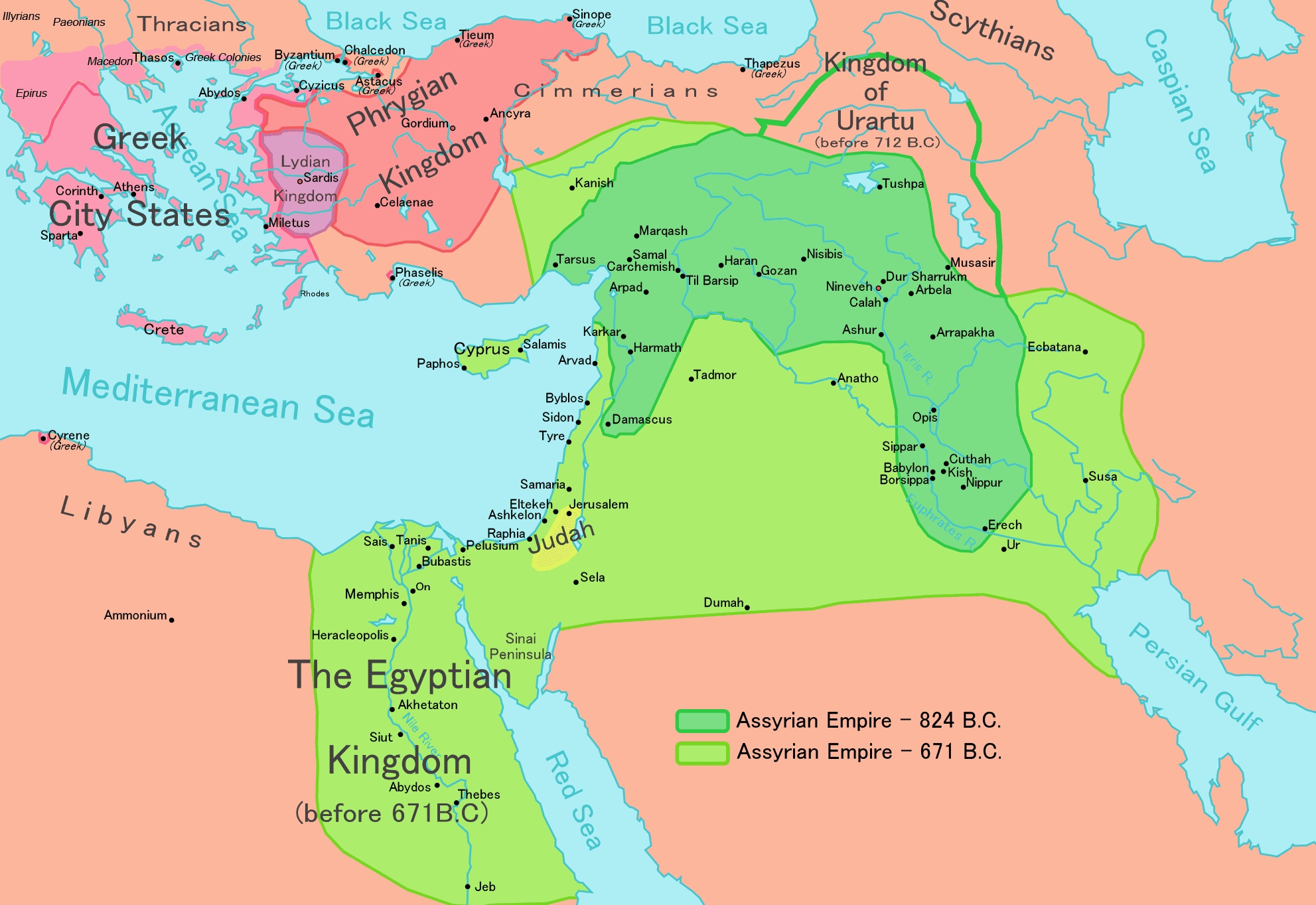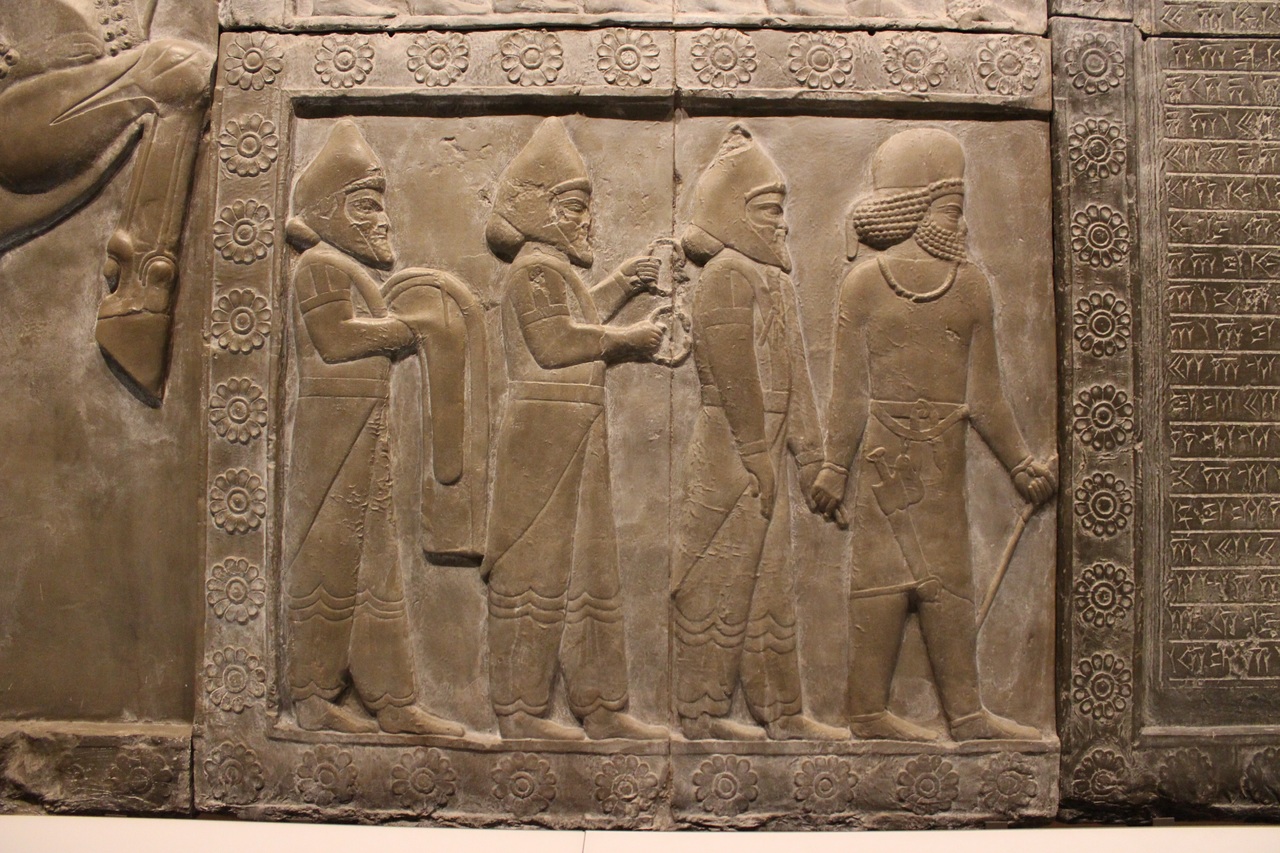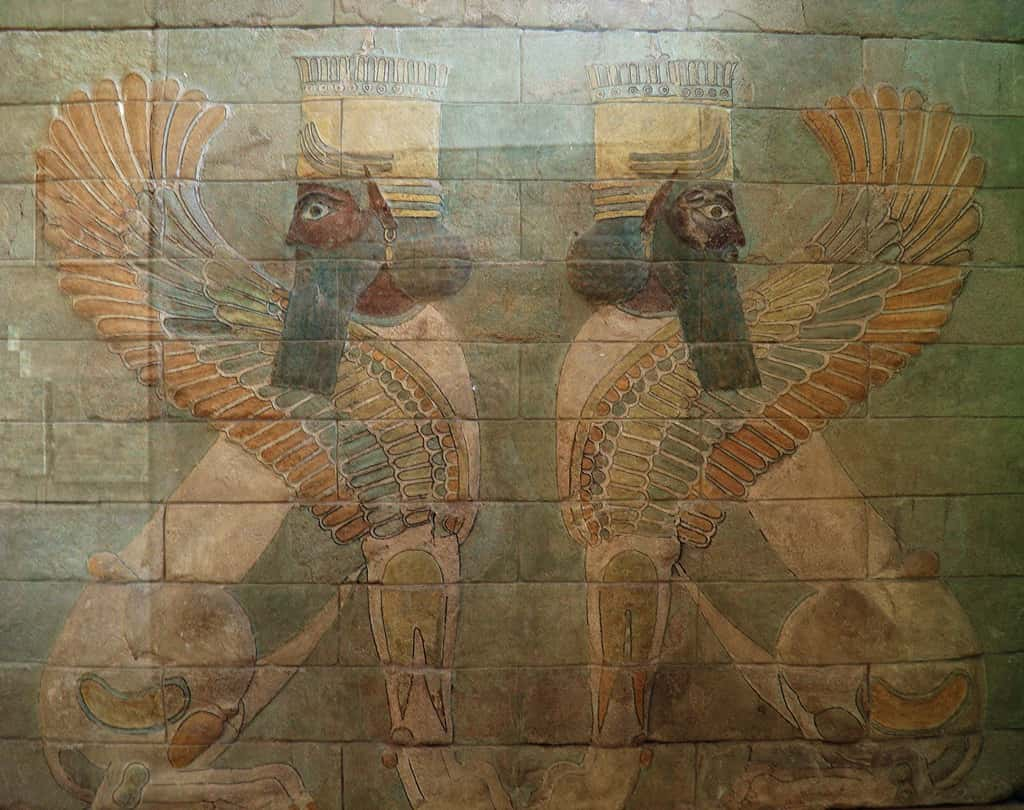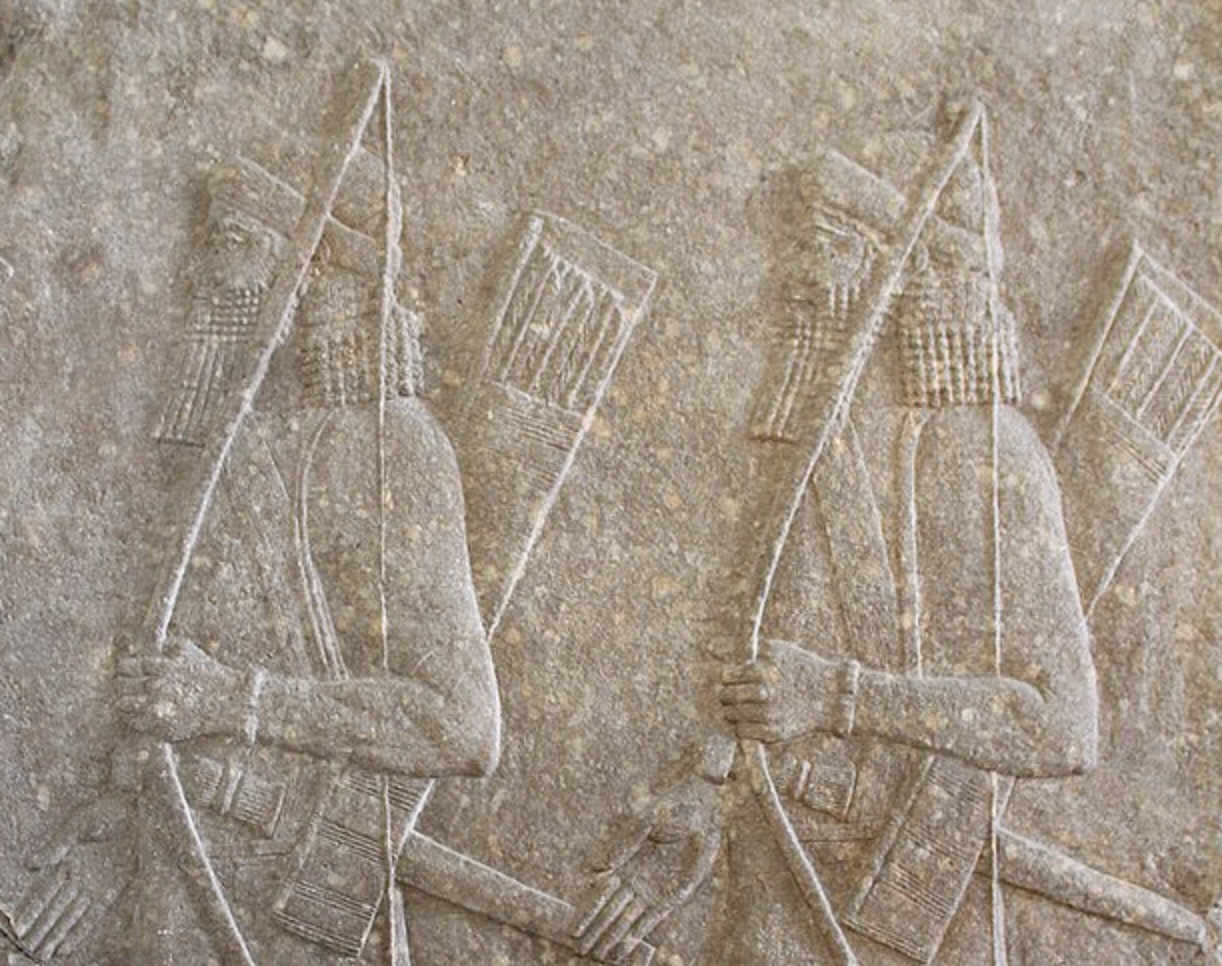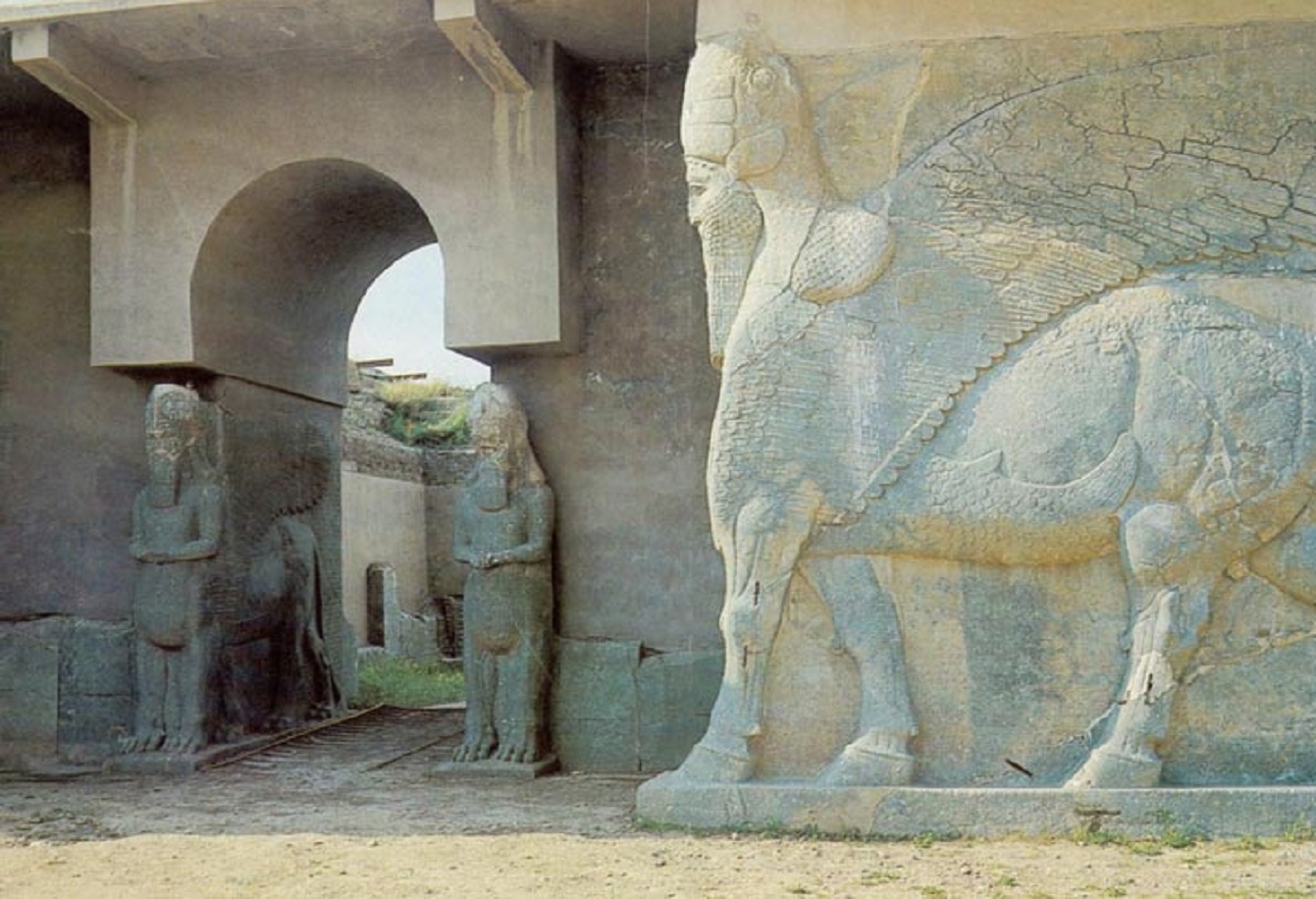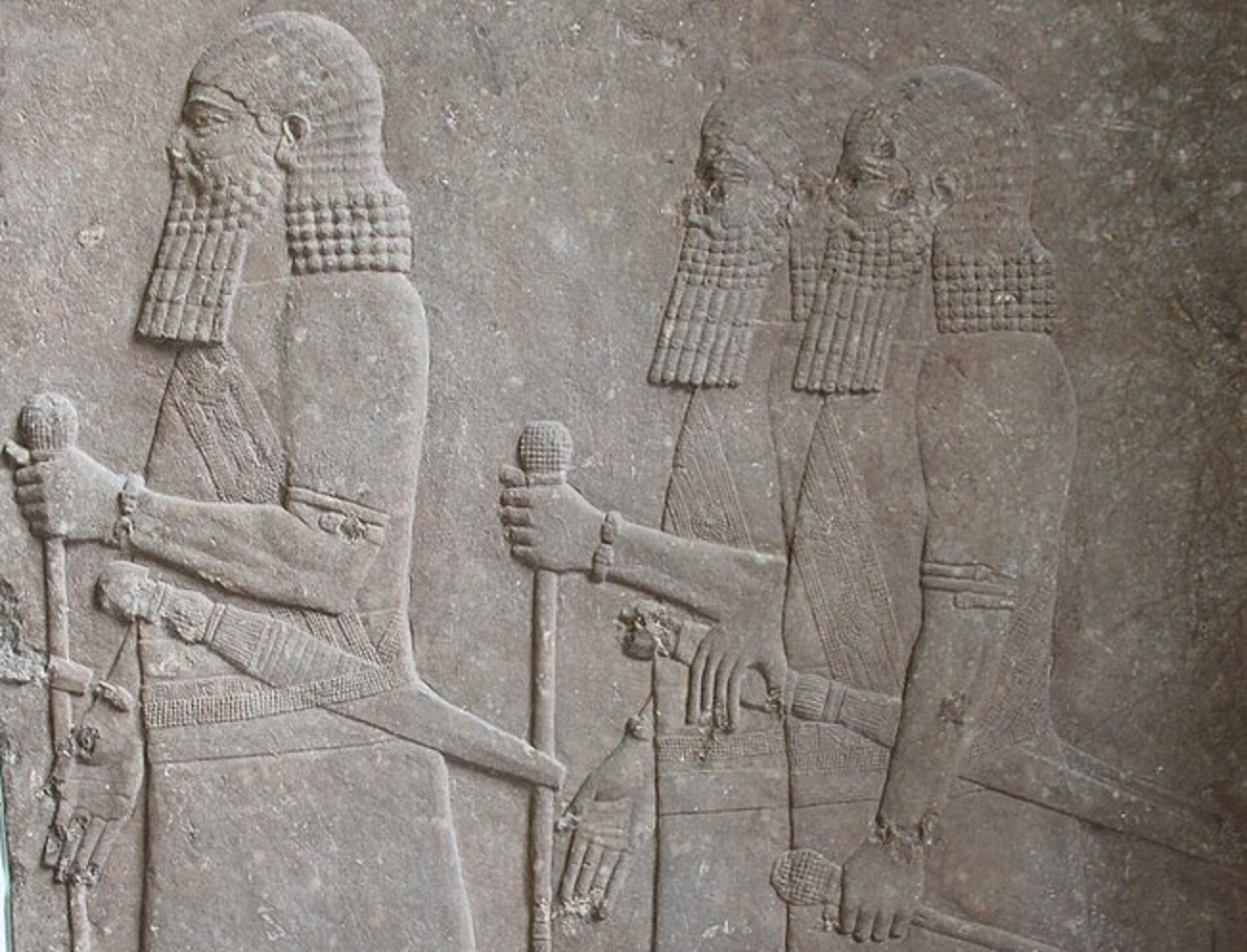When we think of ancient civilizations, we tend to think of people that lived around 2,000 years ago, but the Assyrian civilization is much, much older than that, and it played a far more influential role on the world stage than people realize. Before there were the Romans, the Greeks, or the Persians, the Assyrians were at the center of what we recognize as the cradle of civilization. These 43 facts only confirm the Assyrians’ influence on the world, whether you've heard of them or not.
Assyrian Empire Facts
1. We’ll Take It From Here
There is evidence of civilization in the region of Assyria that dates all the way back to the late Stone Age. First, Neanderthals called the area their home, before modern humans (Homo sapiens) came along and replaced them.
2. New Neighbors
In the fourth millennium BC, the people known as the Akkadians (named after their language) first arrived in the region of Assyria. They mingled with the Sumerians, who initially ruled in the area, but eventually, they formed the Assyrian Empire, named after its capital of Aššur, and would rise up to become the predominant state in the region. The Akkadians were also the first known Semitic people in history (Arabic, Amharic, Aramaic and Hebrew are all examples of Semitic languages still spoken today).
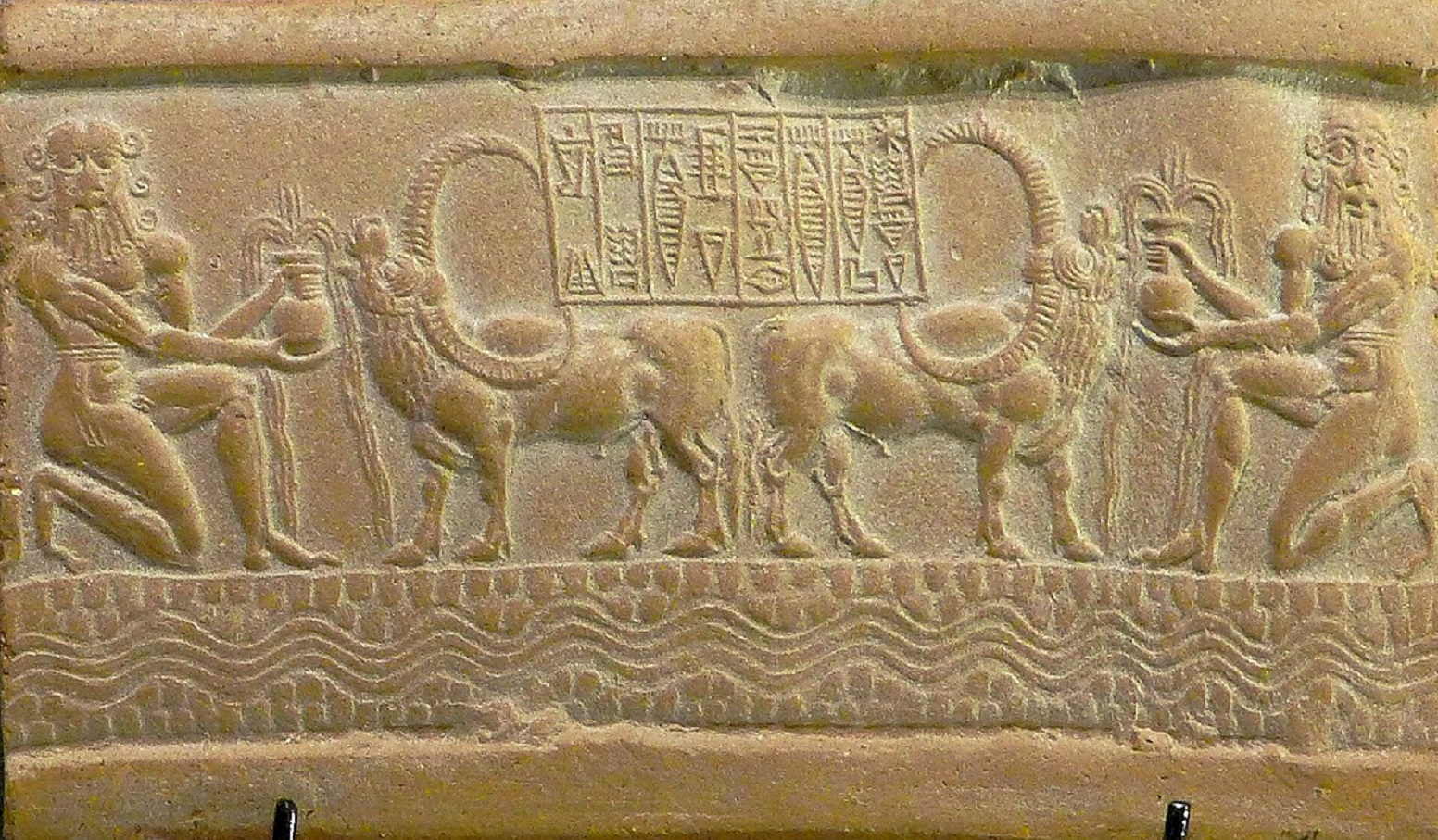 Mbzt 2011, CC BY 3.0, Wikimedia Commons
Mbzt 2011, CC BY 3.0, Wikimedia Commons
3. Early Biblical Connection? I Think Not
Although Assyria had many capitals over the years, Aššur was the first. Some sources claim that the city was named for Ashur, a grandson of Noah, who founded the city after his grandad saved the world with his Ark. However, earlier sources identify Ashur as being an early Assyrian god who received a temple in the city in the 21st century BC, which remains today as the most widely accepted origin of the name.
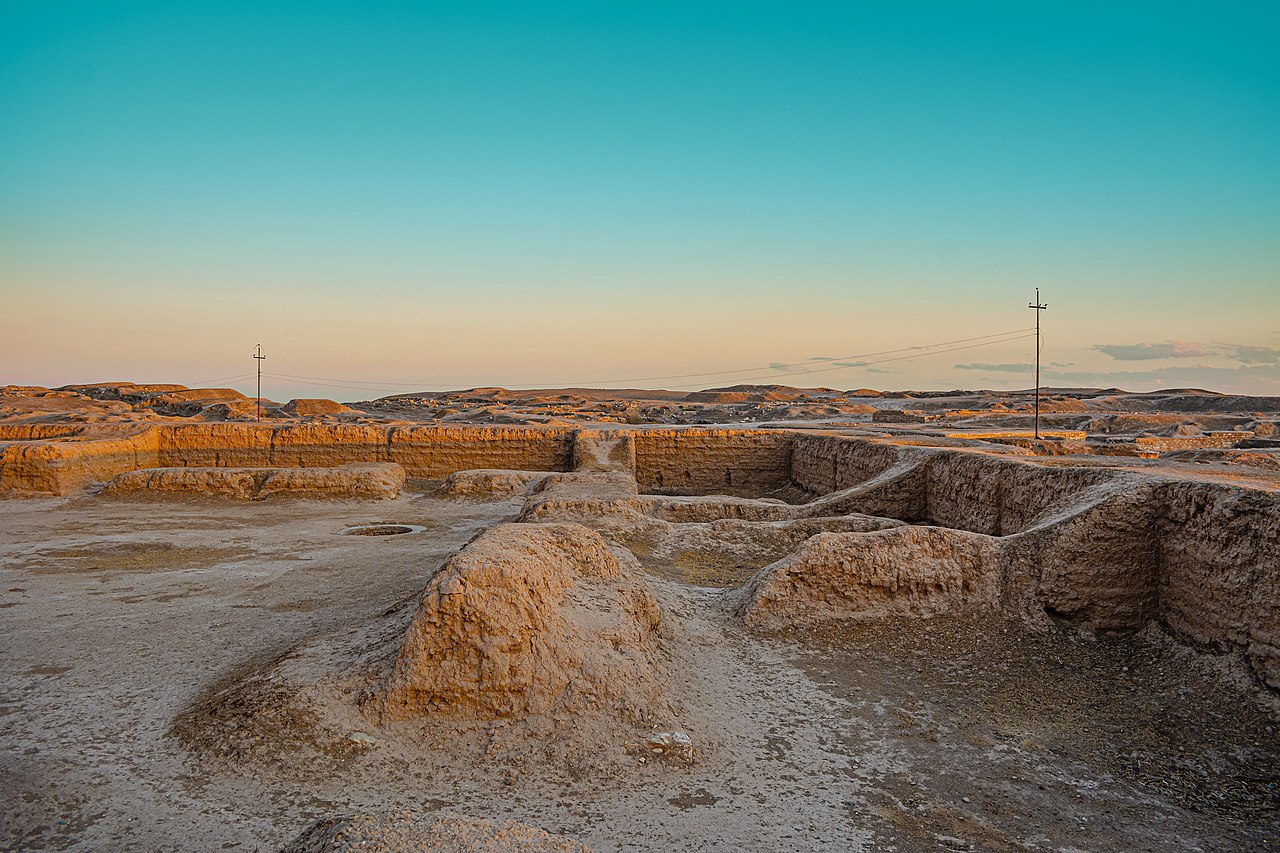 Fakhri Mahmood, CC BY-SA 4.0 , Wikimedia Commons
Fakhri Mahmood, CC BY-SA 4.0 , Wikimedia Commons
4. Present-Day Borders
Although the Assyrian Empire underwent a lot of changes in size and locations, the Assyrian homeland has been identified as a region which includes south-eastern Turkey, north-eastern Syria, and northern Iraq.
5. Make Up Your Minds!
Throughout the Assyrian Empire’s long existence, it had multiple capital cities. Aside from Aššur, there was also Nineveh, Kalhu, Dur-Sharrukin, Shubat-Enlil, and Harran. So really, Sir Robin had a lot of options to choose from when the Bridge Keeper asked him that question on the quest for the Holy Grail!
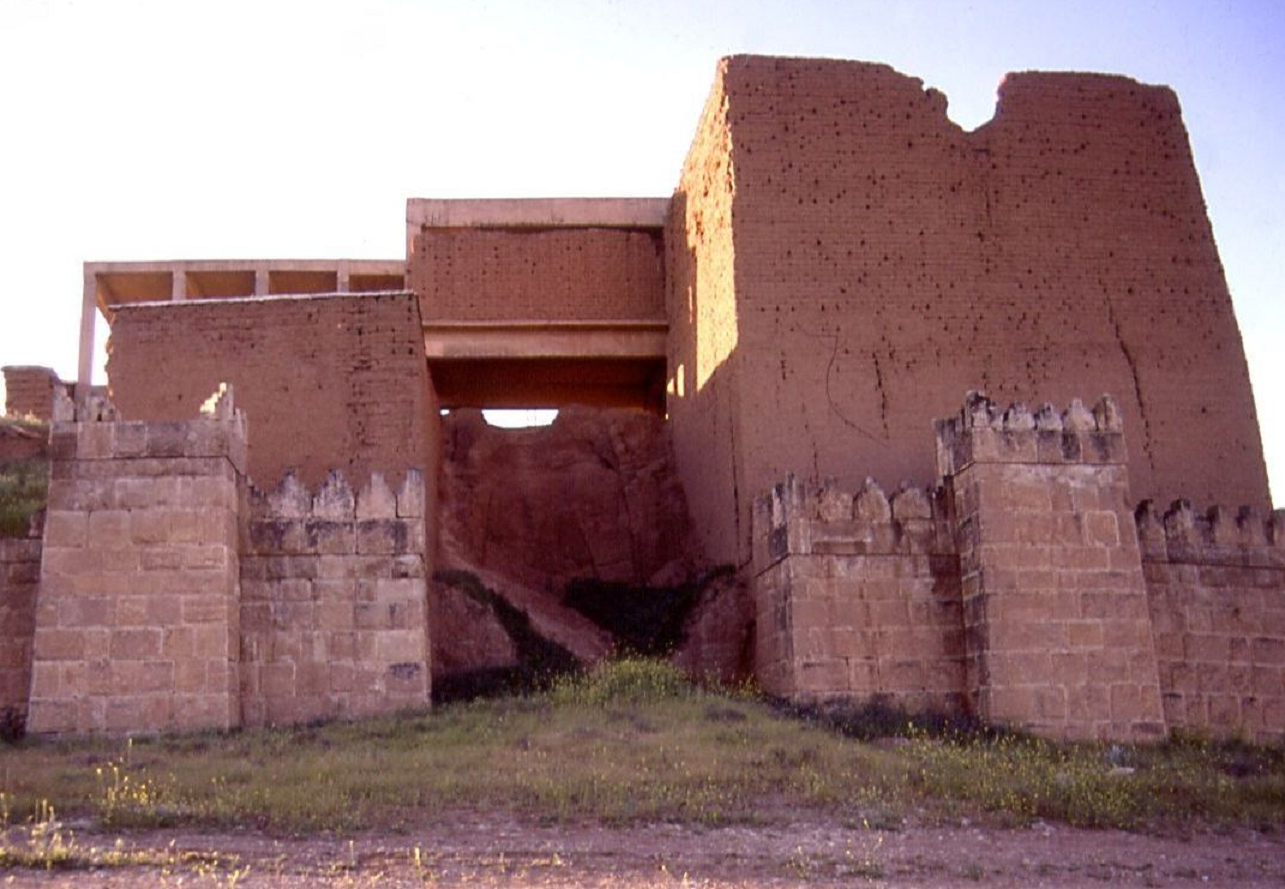 Fredarch, CC BY-SA 3.0, Wikimedia Commons
Fredarch, CC BY-SA 3.0, Wikimedia Commons
6. If You Can’t Beat ‘Em, Join ‘Em
Over the centuries, the Assyrian Empire developed into a warlike nation which would go on to conquer many neighboring peoples. Eventually, the empire grew to consist of a multicultural population united by the Aramaic language. These different peoples were absorbed into the Assyrian identity in a process which was so successful that it was called "Assyrianization."
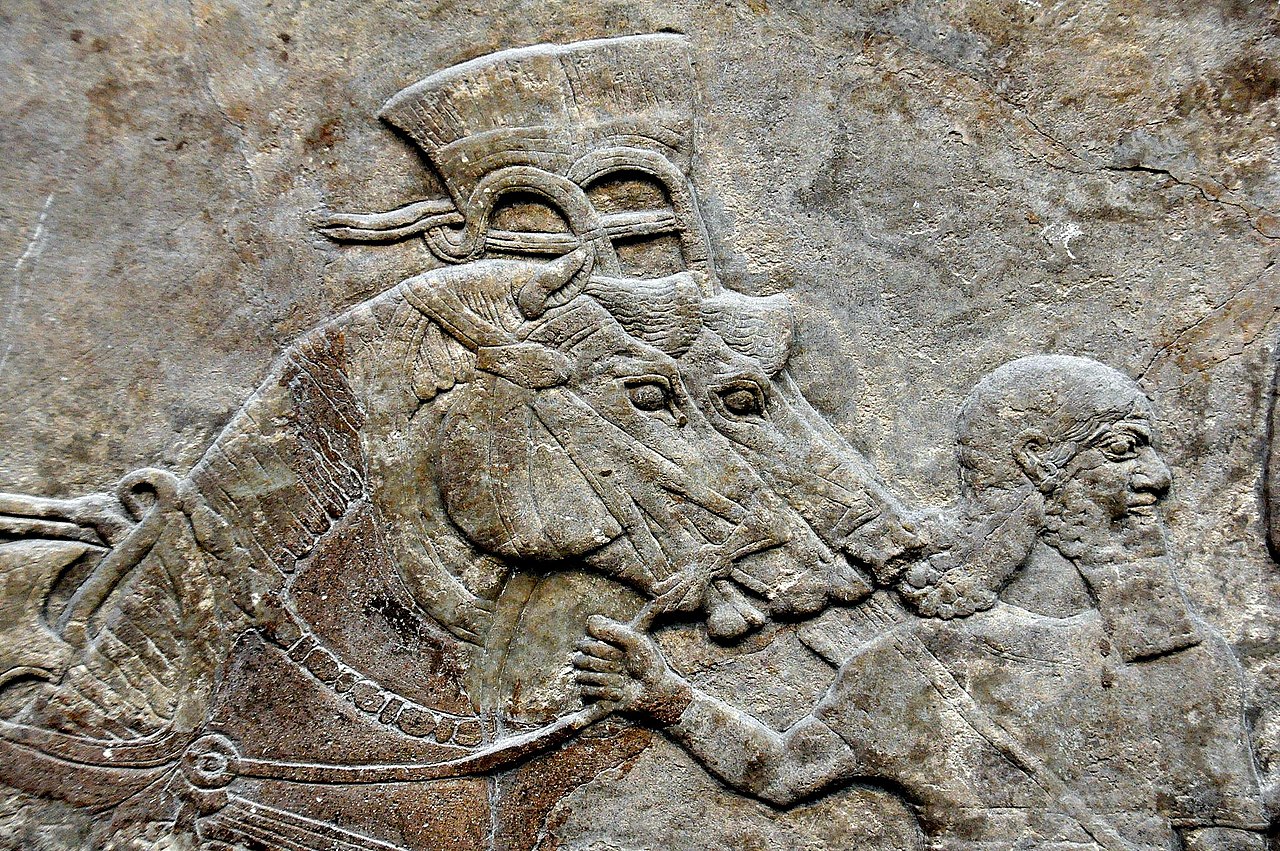 Osama Shukir Muhammed Amin FRCP , CC BY-SA 4.0, Wikimedia Commons
Osama Shukir Muhammed Amin FRCP , CC BY-SA 4.0, Wikimedia Commons
7. They Loved Camping
The earliest known Assyrian rulers were chronicled as the “kings who lived in tents.” These wanderers lived a pastoral life as they travelled the Assyrian territory. Some records report that Assyria was ruled by an oligarchy rather than a monarchy, meaning a small council ruled rather than just one man, but this is disputed.
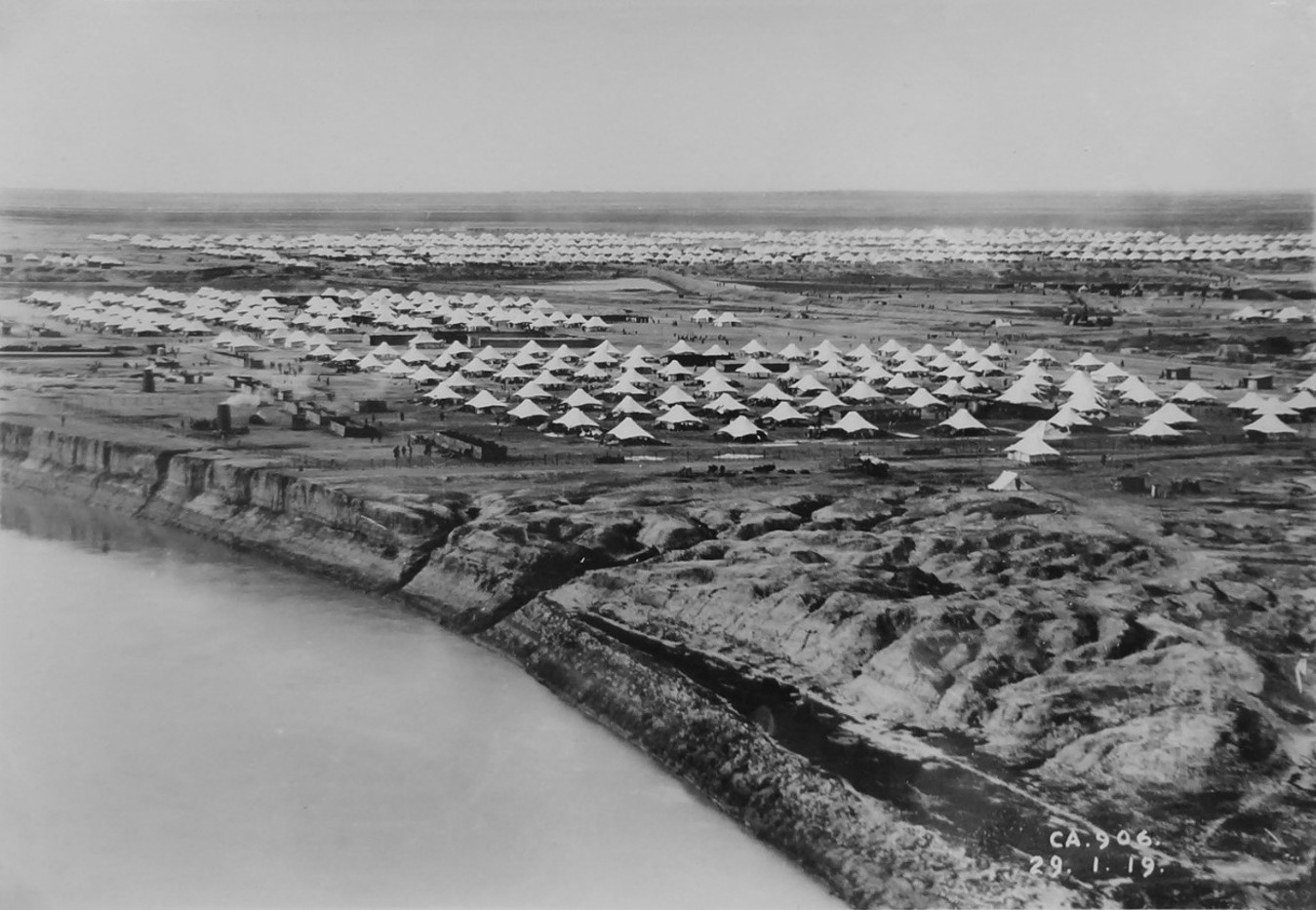 Unknown Author, Wikimedia Commons
Unknown Author, Wikimedia Commons
8. Our First King
While there is little evidence to confirm this for sure, some sources have claimed that the first of these Assyrian kings who lived in tents was a man named Tudiya. This would have been around 2450 BC, marking the first time that Assyria was counted as an independent nation.
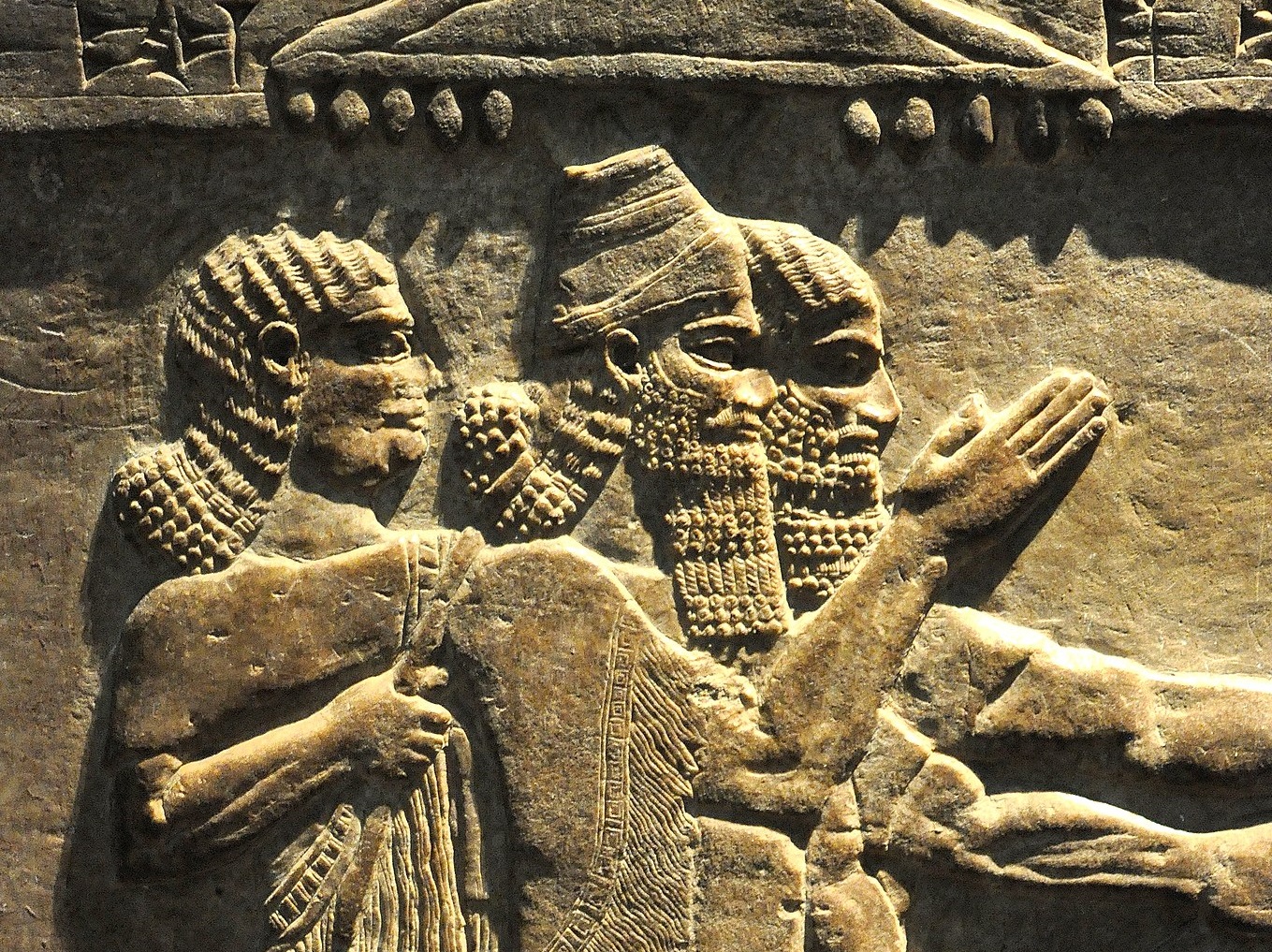 Osama Shukir Muhammed Amin, CC BY-SA 4.0, Wikimedia Commons
Osama Shukir Muhammed Amin, CC BY-SA 4.0, Wikimedia Commons
9. Growing Pains
The Early Assyrian period (marked from 2600-2025 BC) was a turbulent period of several changes. The kings who lived in tents were overthrown by the Akkadian Empire, only for the Assyrians to regain their independence, and then be taken over by the Neo-Sumerian Empire. The Assyrian rulers were noted as paying tribute to the Neo-Sumerians until 2025 BC, when the time of the Old Assyrian Empire began.
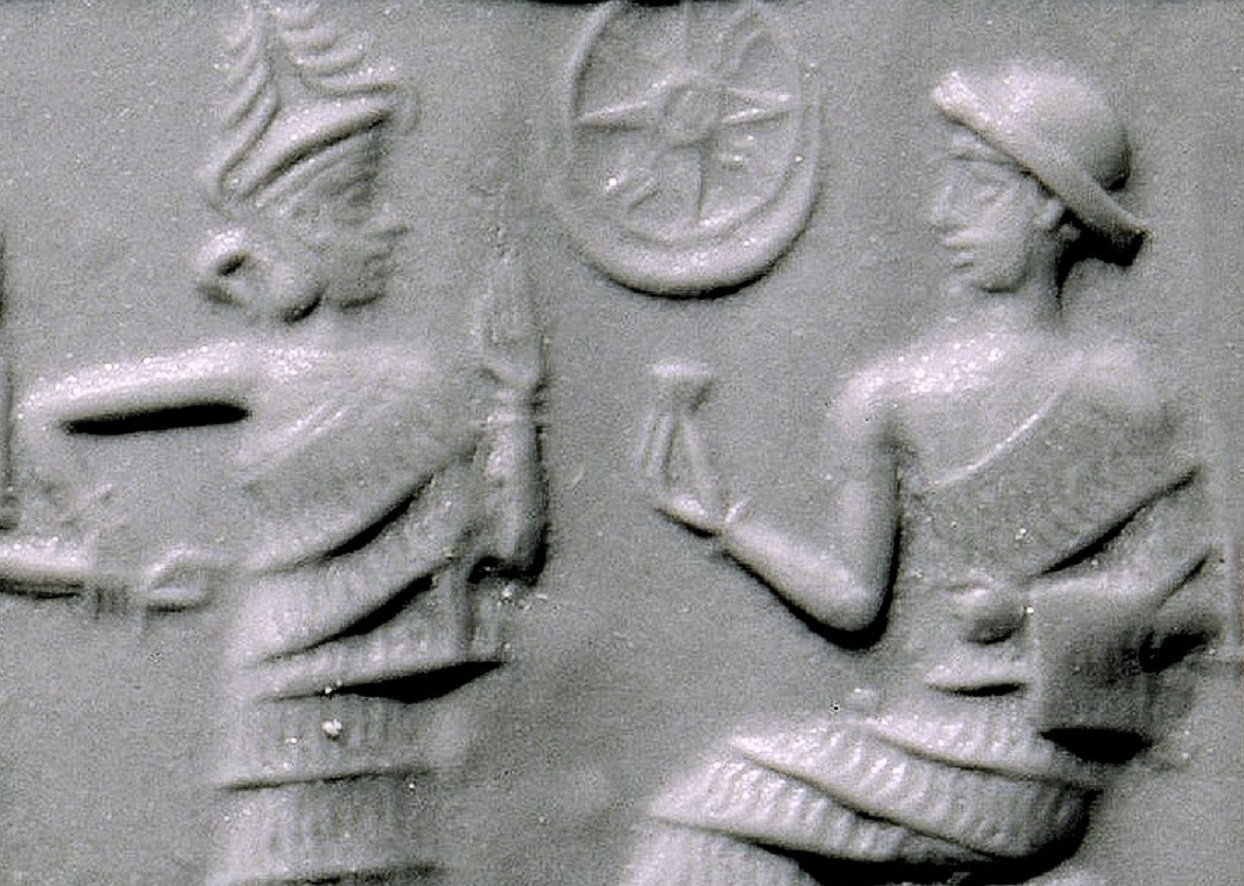 Metropolitan Museum of Art, Wikimedia Commons
Metropolitan Museum of Art, Wikimedia Commons

History's most fascinating stories and darkest secrets, delivered to your inbox daily.
10. Let’s Get Things Started!
The Assyrian Empire’s early days began when a King named Puzur-Ashur I became the independent ruler of Assyria around 2000 BC and founded a dynasty which lasted eight generations. This covers a period of 216 years. We don’t know how long Puzur-Ashur I ruled, but what is known is that he established temples to Ashur, Ishtar, and Adad in Assyria.
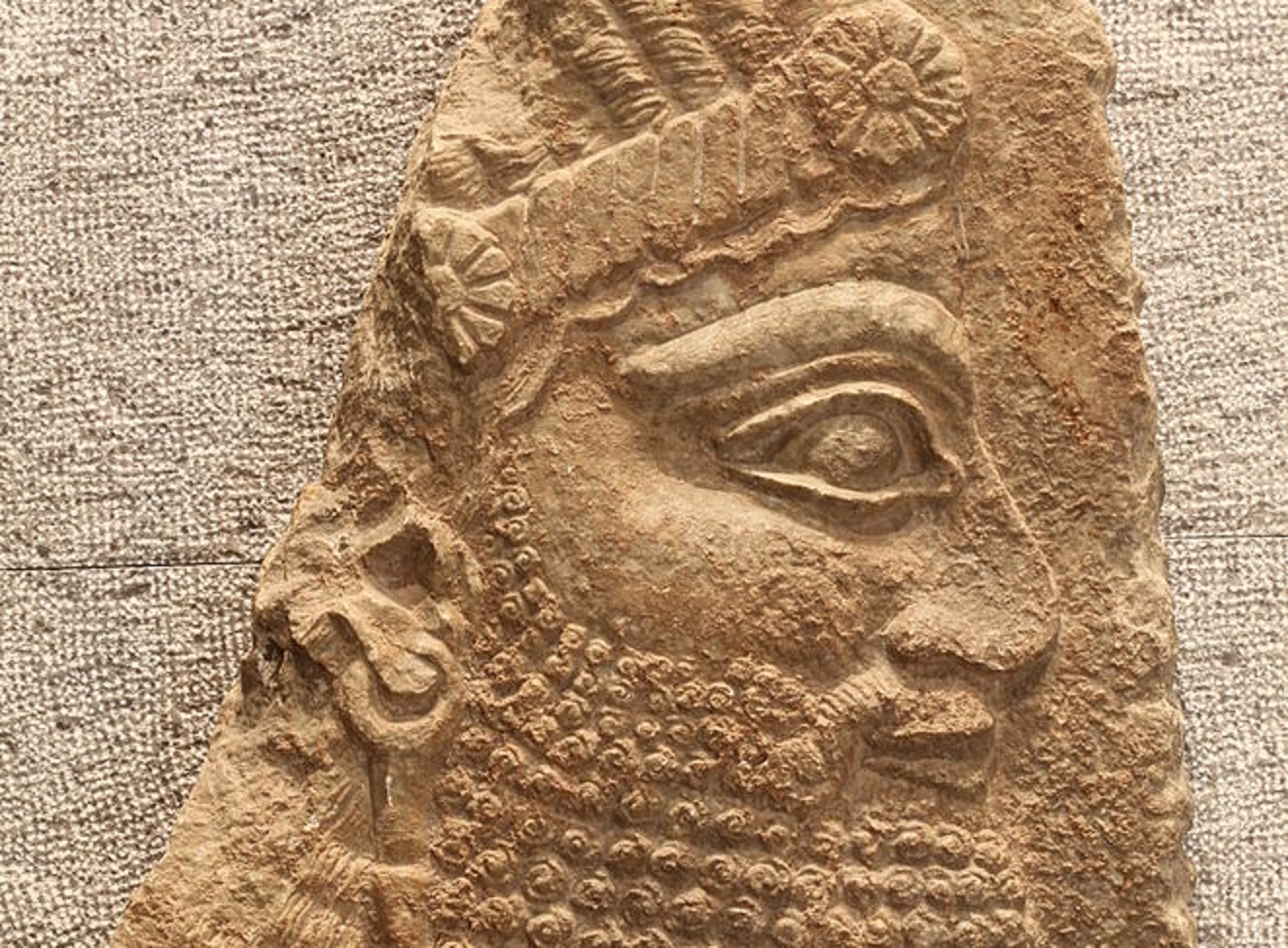 Rama, CC BY-SA 2.0 FR Wikimedia Commons
Rama, CC BY-SA 2.0 FR Wikimedia Commons
11. Successful Name
Puzur-Ashur III came to power in 1484 BC, ruling until 1460 BC. Like his first namesake, Puzur-Ashur III was into temple-building. He devoted several to Sin and Shamash, the gods of moon and sun, respectively. He also oversaw a period of rebuilding and refortifications in Assyria, as well as arranging a treaty with the Babylonian Empire which defined both territories on paper. Because of his efforts, his following two successors were said to have peaceful reigns.
 British Museum, Wikimedia Commons
British Museum, Wikimedia Commons
12. Creating the Chronicles
Many of the Assyrian kings are listed in the unoriginally named Assyrian King Lists. These massive chronologies cover nearly 2,000 years of monarchs, from 2500 BC to the 8th century BC. Three different sources provided the names on the list, along with two fragments whose full accounts have been lost to history. While it's quite amazing that such a detailed chronicle could have existed for such a long time, let alone that it still exists today, the lists need to be taken with a grain of salt, as there are several kings that are well known to history, yet were omitted from the King Lists.
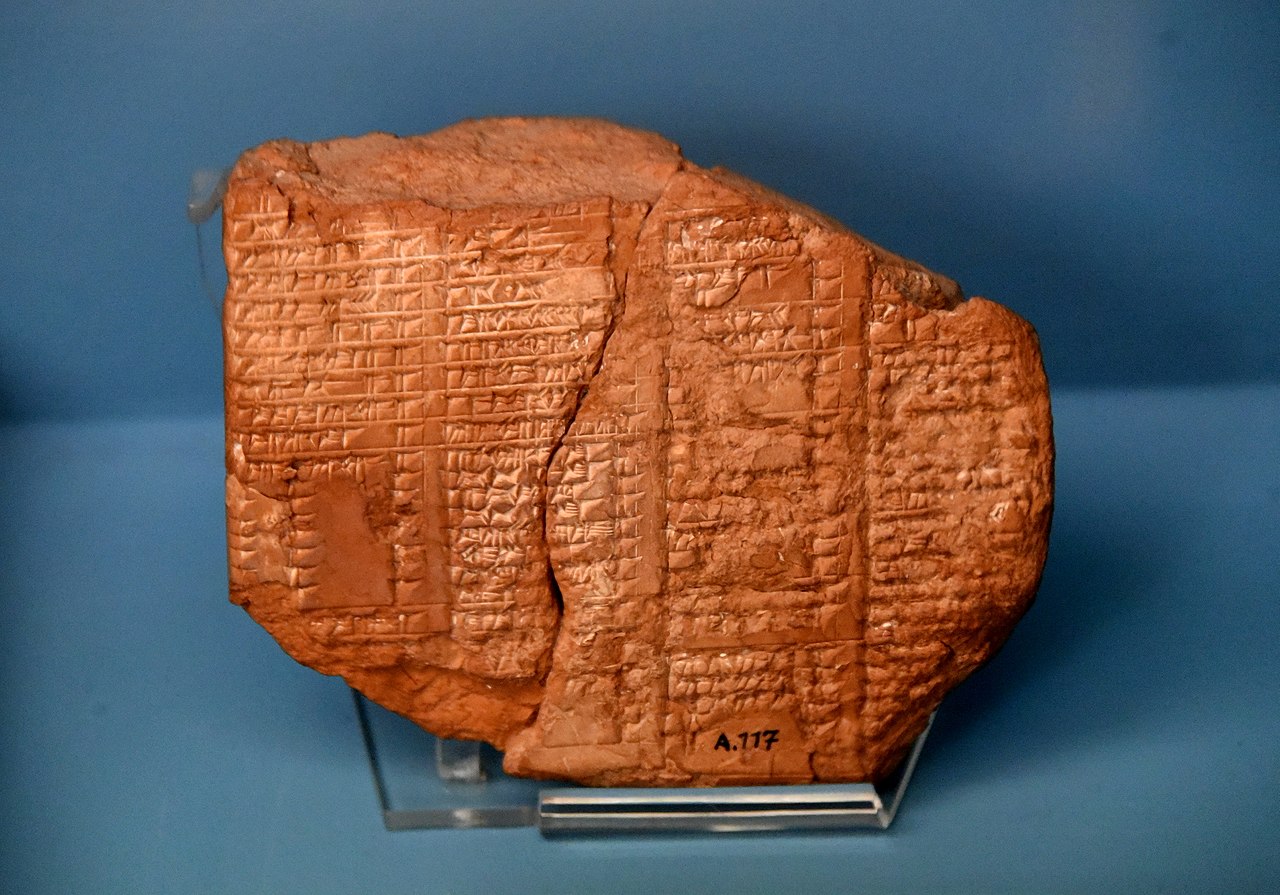 Osama Shukir Muhammed Amin, CC BY-SA 4.0, Wikimedia Commons
Osama Shukir Muhammed Amin, CC BY-SA 4.0, Wikimedia Commons
13. Inclusive Empire
Sex crimes were punished equally in the Assyrian Empire, regardless of their nature, but they were likely surprisingly open to homosexual relationships. But just to make things complicated, they had highly detailed laws as to which homosexual acts were okay, and which were viewed as unacceptable. According to one historian, such attention would not have been paid to homosexuality in their laws “if homosexual behavior were not a familiar aspect of daily life of early Mesopotamia.”
14. Suffragette City
Sadly, the Ancient Assyrians were not known for their progressive laws regarding women. While Mesopotamia had seen nearly equal rights for women, the Assyrians refused to let girls be educated or hold positions of power. Moreover, if a woman committed adultery, it was legally acceptable to have her beaten or put to death.
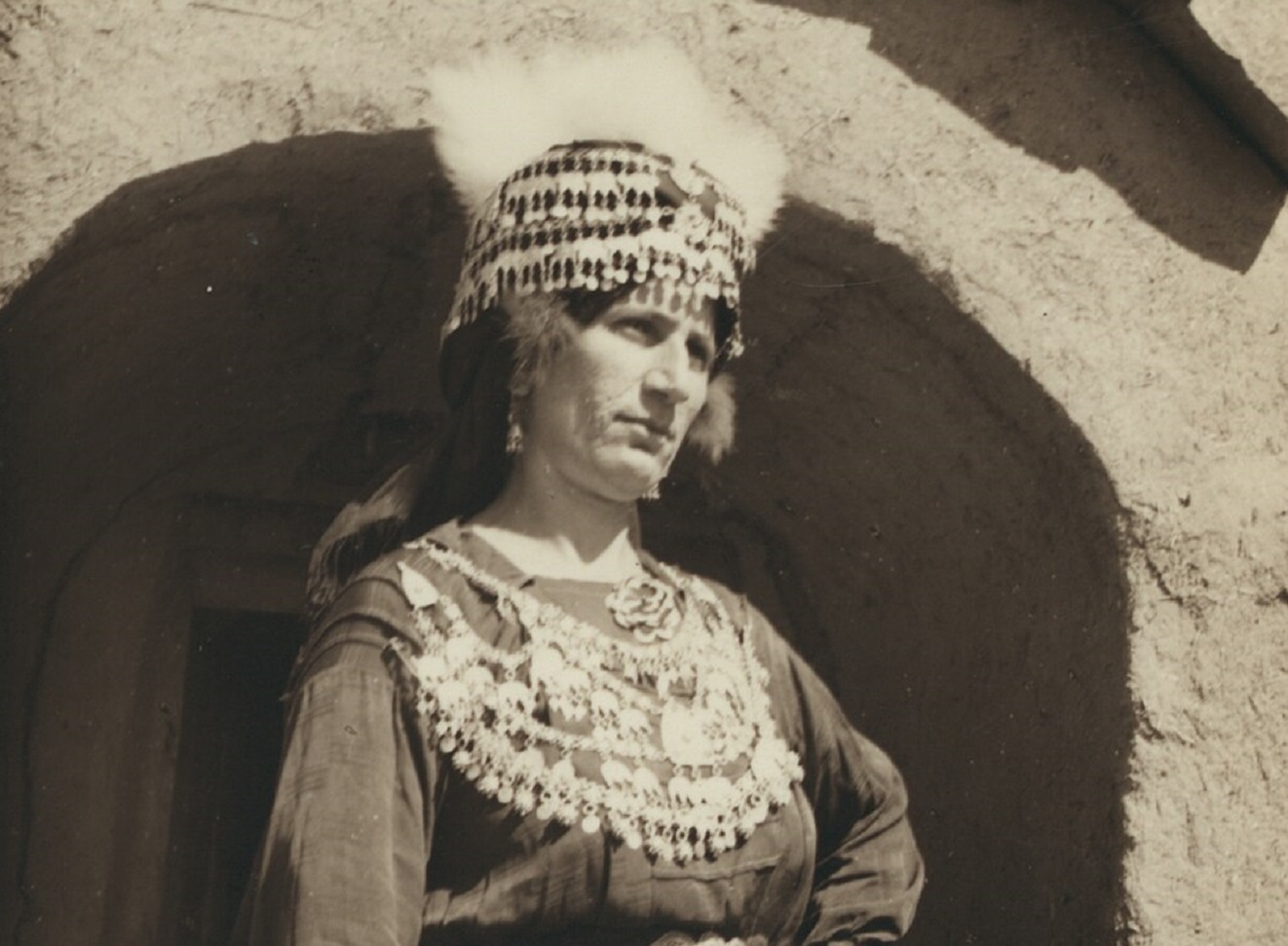 Whiting, John D. Wikimedia Commons
Whiting, John D. Wikimedia Commons
15. Big City
Nineveh was another major city in the history of Ancient Assyria. By the time of the Neo-Assyrian Empire, it had grown to contain a population of 120,000. Some historians have argued that Nineveh, at its peak, was the most populous city in the world.
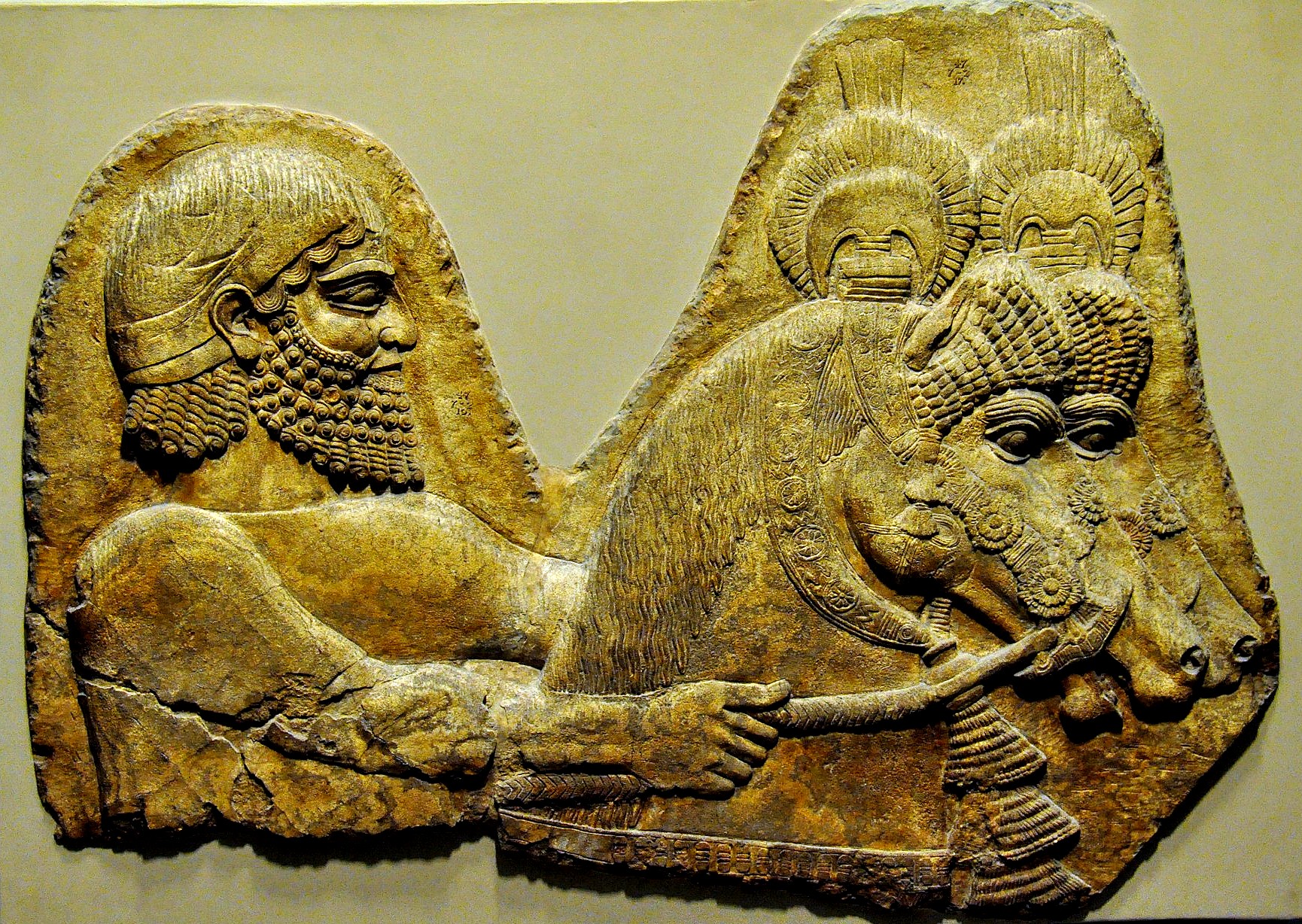 Osama Shukir Muhammed Amin, CC BY-SA 4.0, Wikimedia Commons
Osama Shukir Muhammed Amin, CC BY-SA 4.0, Wikimedia Commons
16. We Need to Make Some Badges for Them
The period of upheaval from 1200-900 BC, known as the Bronze Age Collapse, affected nearly all known civilizations. It was a dark age where societies collapsed, and populations were forced to move across the landmasses. However, the Assyrians were one of the few civilizations to survive the Bronze Age Collapse intact.
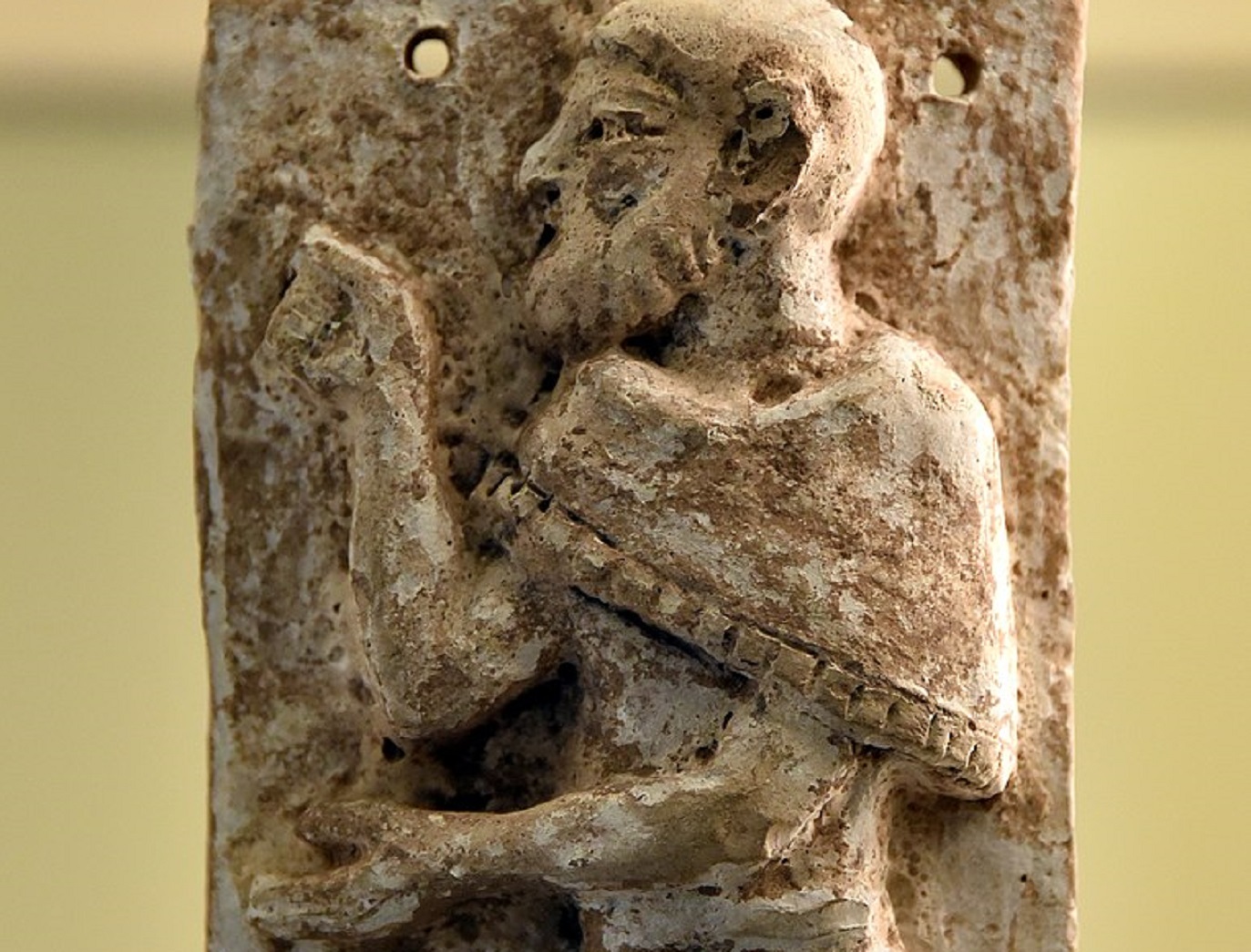 Osama Shukir Muhammed Amin, CC BY-SA 4.0, Wikimedia Commons
Osama Shukir Muhammed Amin, CC BY-SA 4.0, Wikimedia Commons
17. We Hate Those Greeks! Right?
As with other nations conquered by the Persians, the Assyrians served in the Persian army. When the Persian King Darius I first invaded Greece, the 490 BC Battle of Marathon featured Assyrian troops in the front lines of the Persian Army which was famously defeated by the Athenians and their allies.
18. No Resume Required
By the time that the Assyrian Empire was in full conquer mode, it became a legal obligation for all free Assyrian men to serve in the military for part of their lifetime. We can only imagine how many of those men would end up spending the remainder of their life as soldiers, however long or short that remainder was.
19. Make Way for the New Guys
Eventually, in the 7th century, the Assyrian Empire did collapse, and became subservient to Babylon from 605 to 549 BC. This led to the Persians coming in under Cyrus the Great to form the huge Achaemenid Empire (remember the bad guys from 300? Ya, that was the Achaemenids). In 330 BC, this empire was conquered by Alexander the Great, whose premature death led to his generals carving up what he’d gained. Assyria became part of the Seleucid Empire until it also collapsed. It was an ironic (and poetic, as some would argue) example of a conquering nation now being conquered over and over again.
 Legendary Pictures, 300 (2006)
Legendary Pictures, 300 (2006)
20. This Jesus Fellow Sounds Like a Decent Sort
Believe it or not, Assyria was the first independent Christian state. In the first century AD, long after its days of empire were over, Assyria was where the Church of the East (one of the earliest Christian churches) was founded before spreading across other parts of Asia and Europe.
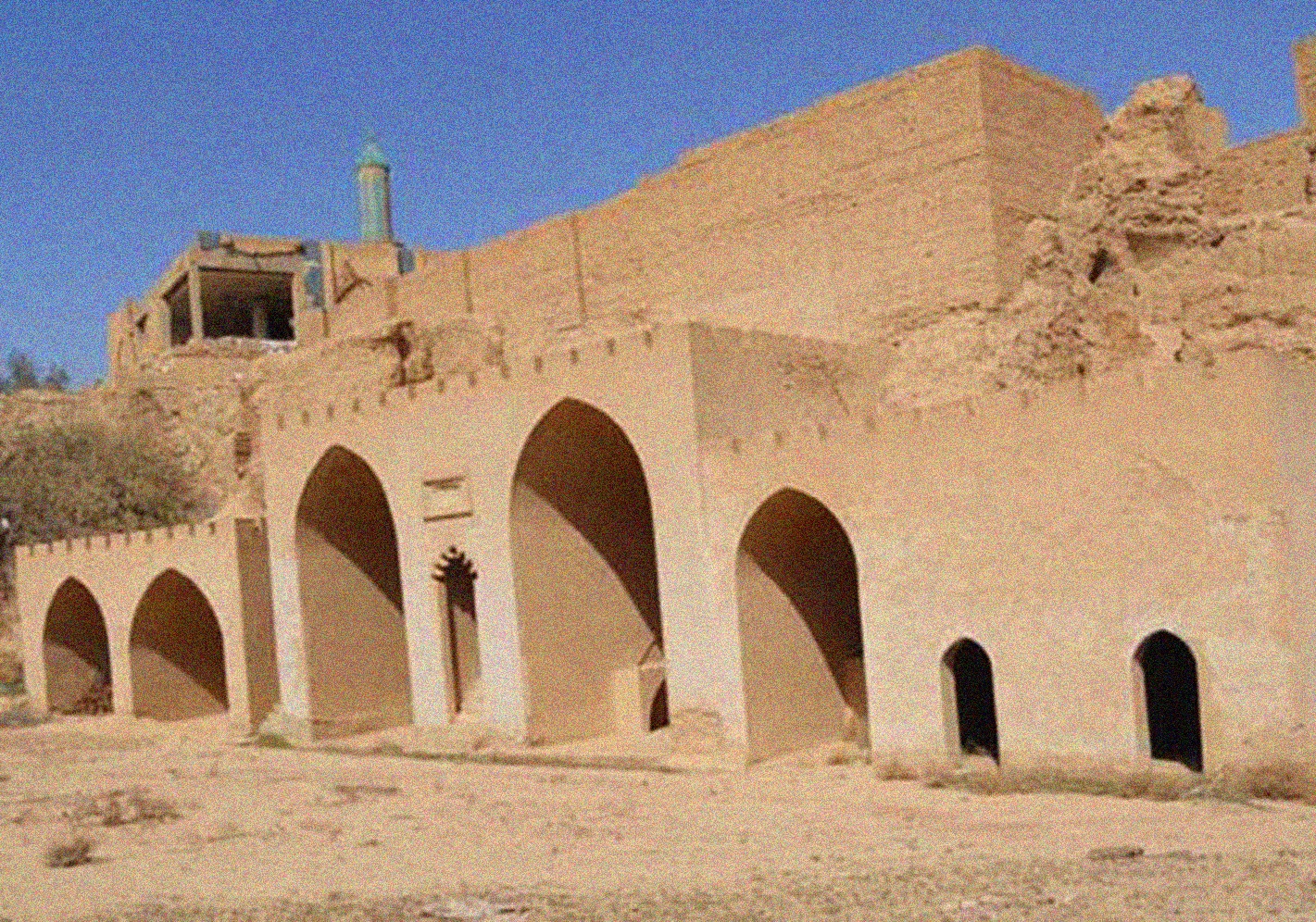 Riad Al-Jaber, CC BY-SA 4.0, Wikimedia Commons
Riad Al-Jaber, CC BY-SA 4.0, Wikimedia Commons
21. Holiday in England?
By 116 AD, just after Assyria had been given some independent rule under the Parthians, the Roman Empire were the ones who came a knockin'. The Romans left after a few years, but not before recruiting Assyrians into their legions. Surprisingly, many of them ended up serving at Hadrian’s Wall in Britain. This is confirmed through discoveries of 2nd century inscriptions made throughout Northern England in Aramaic. Now that's a long ways!
 Andrew Curtis, CC BY-SA 2.0, Wikimedia Commons
Andrew Curtis, CC BY-SA 2.0, Wikimedia Commons
22. Move Over, Marco Polo!
Despite what European history would have had you think, the first bringers of Christianity to the Far East had arrived centuries before a famous Italian began his trek to the court of Kublai Khan. Discovered artifacts support that the Church of the East had been established in China years, beginning as early as 600 AD.
 Netflix, Marco Polo (2014–2016)
Netflix, Marco Polo (2014–2016)
23. Call a Plumber? Invent Him First!
Before the Romans ever decided that they were sick of drawing water from the well, the Ancient Assyrians were developing history’s first ever aqueducts. Not only that, but they have also been credited with the world’s first indoor plumbing.
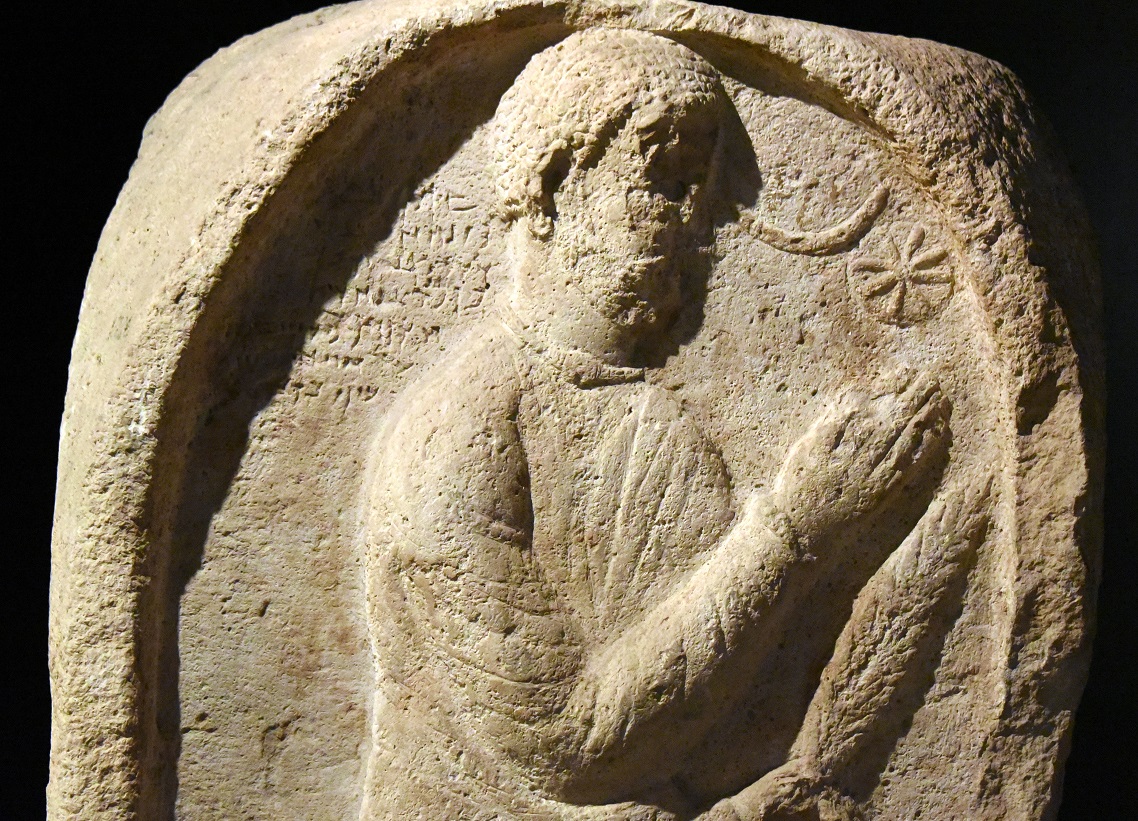 Osama Shukir Muhammed Amin, CC BY-SA 4.0, Wikimedia Commons
Osama Shukir Muhammed Amin, CC BY-SA 4.0, Wikimedia Commons
24. A Secure Society
The Assyrians have been noted as being the first nation to develop locks and keys. Sadly, no evidence has been found to confirm if they also came up with hiding they spare key under the doormat when they left home.
25. Bad King
The Assyrian King Sennacherib, who ruled from 705-681 BC, was one of the most powerful kings in Assyrian history. He expanded the empire immensely and oversaw the construction of “the Palace without a Rival” at Nineveh. However, his power and greed got the best of him, and Sennacherib’s sons assassinated their father in his grand palace.
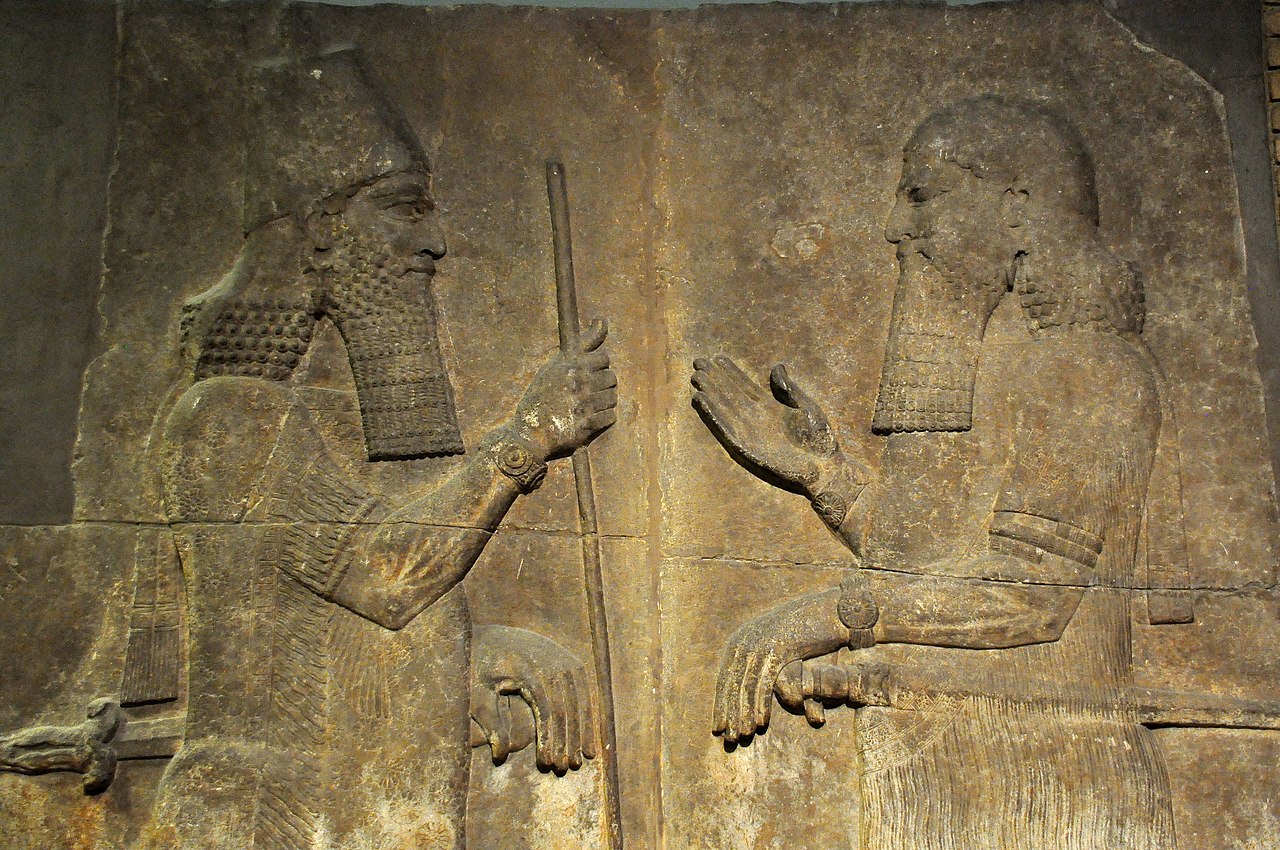 Osama Shukir Muhammed Amin, CC BY-SA 4.0, Wikimedia Commons
Osama Shukir Muhammed Amin, CC BY-SA 4.0, Wikimedia Commons
26. The Sins of the Father
One of the reasons why Sennacherib’s sons were driven to murder their dad was because he had chosen his youngest son, Esarhaddon, to succeed him. Despite his brothers’ efforts, Esarhaddon still became king in 681 BC. One of his first actions was to help reconstruct Babylon, which his father had helped destroy. He publicly declared that the destruction of Babylon had been allowed by the gods to punish the Babylonians for their sins, and that he, Esarhaddon, had been chosen to pick up the pieces. Nowhere did he mention anything about his or his father’s role in said destruction. Esarhaddon went on to conquer Egypt, succeeding at something that Sennacherib, despite his military successes, was unable to achieve.
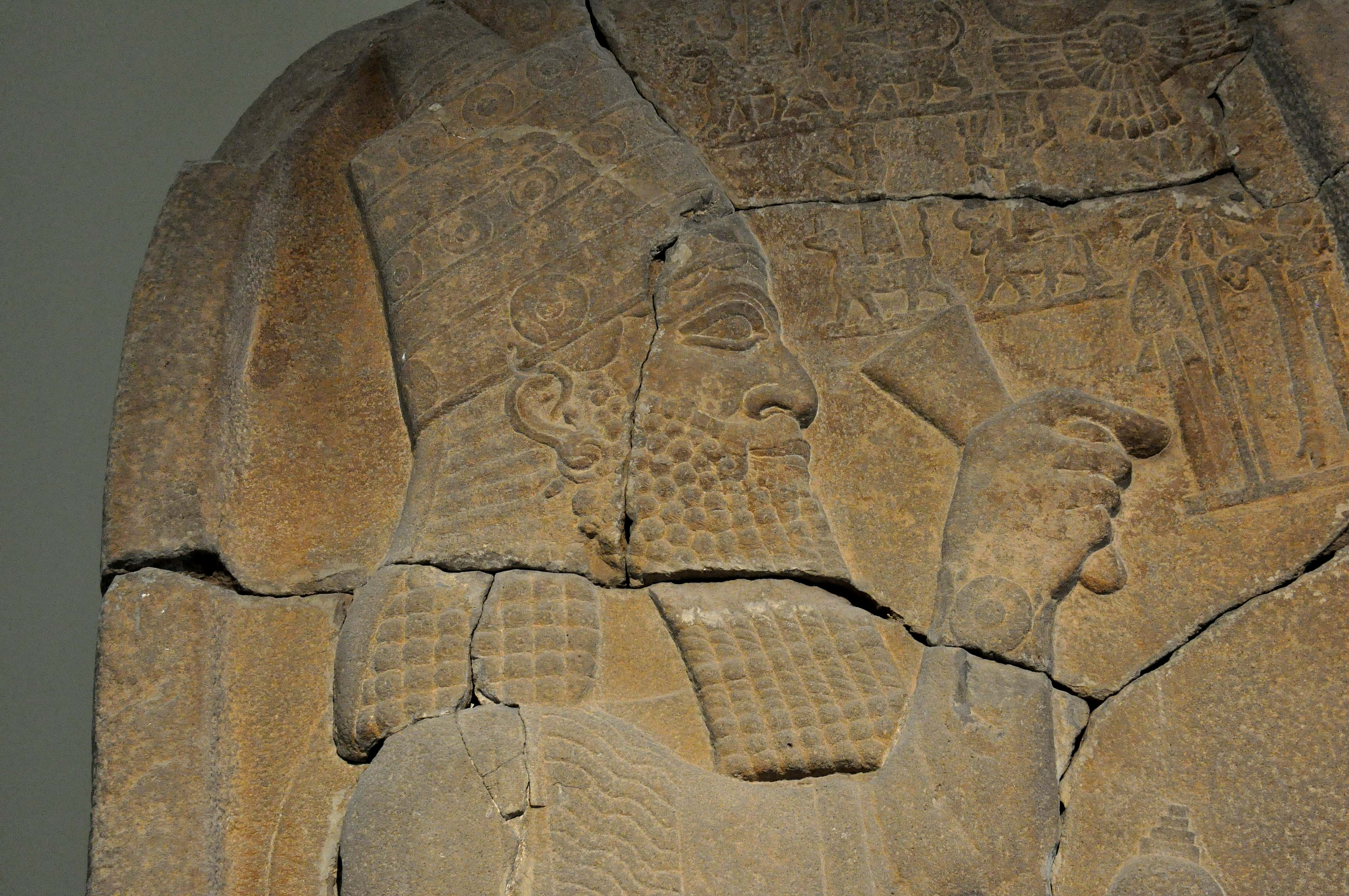 Osama Shukir Muhammed Amin, CC BY-SA 4.0, Wikimedia Commons
Osama Shukir Muhammed Amin, CC BY-SA 4.0, Wikimedia Commons
27. Mom’s in Charge
For five years during the Neo-Assyrian Empire, a woman was the de facto ruler. Shammuramat was the widow of King Shamshi-Adad V, and when he died, she became regent of the Assyrian Empire until her son came of age. This was normally unthinkable, but she ruled successfully, and her son became King Adad-nirai III.
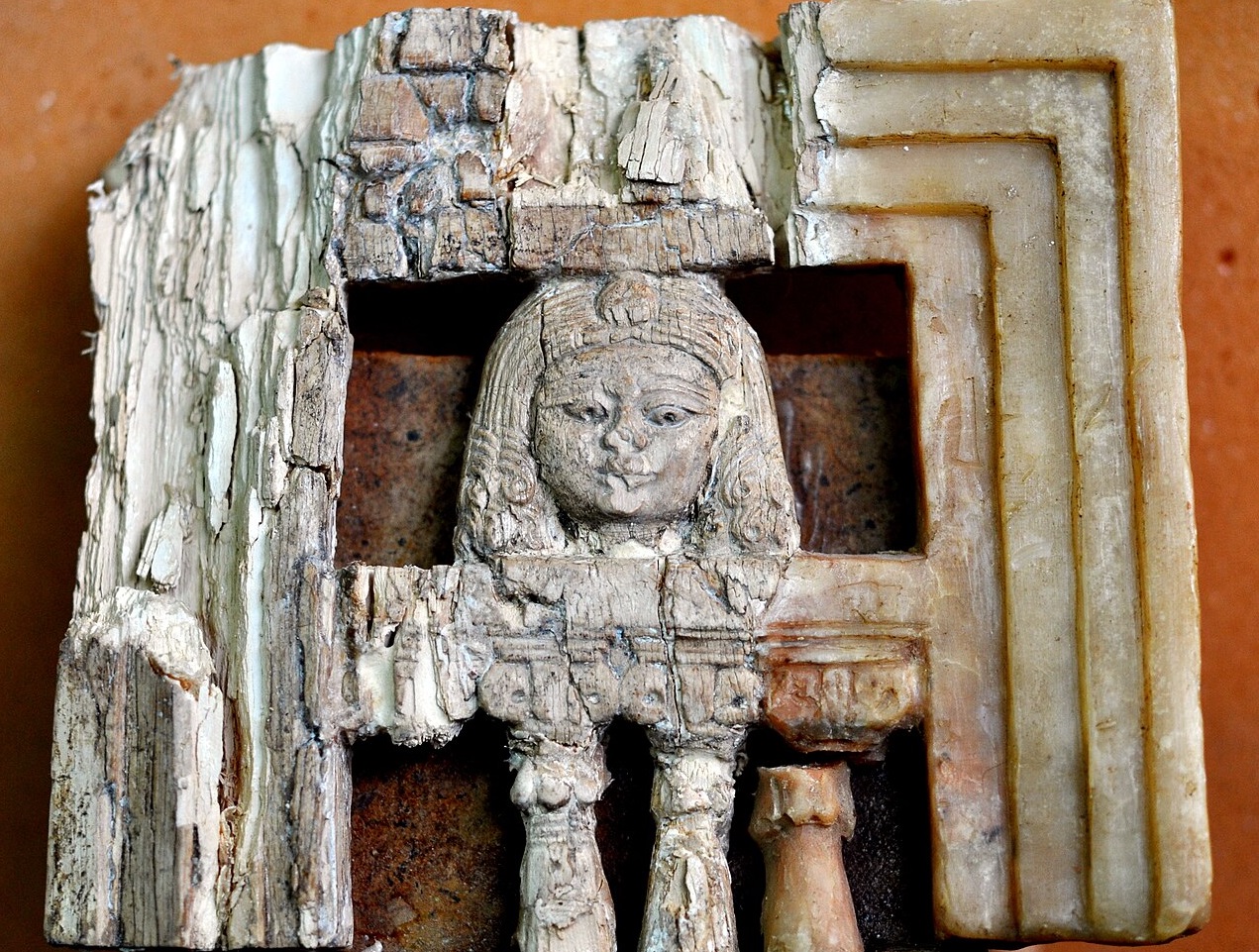 Osama Shukir Muhammed Amin, CC BY-SA 4.0, Wikimedia Commons
Osama Shukir Muhammed Amin, CC BY-SA 4.0, Wikimedia Commons
28. Is That a New Record?
King Shalmaneser had a particularly bizarre boast when it came to his conquests and military accomplishments. He famously bragged that he had blinded more than 14,400 prisoners in one eye after he had defeated them in battle. No word on if he paid for their monocles to add insult to injury.
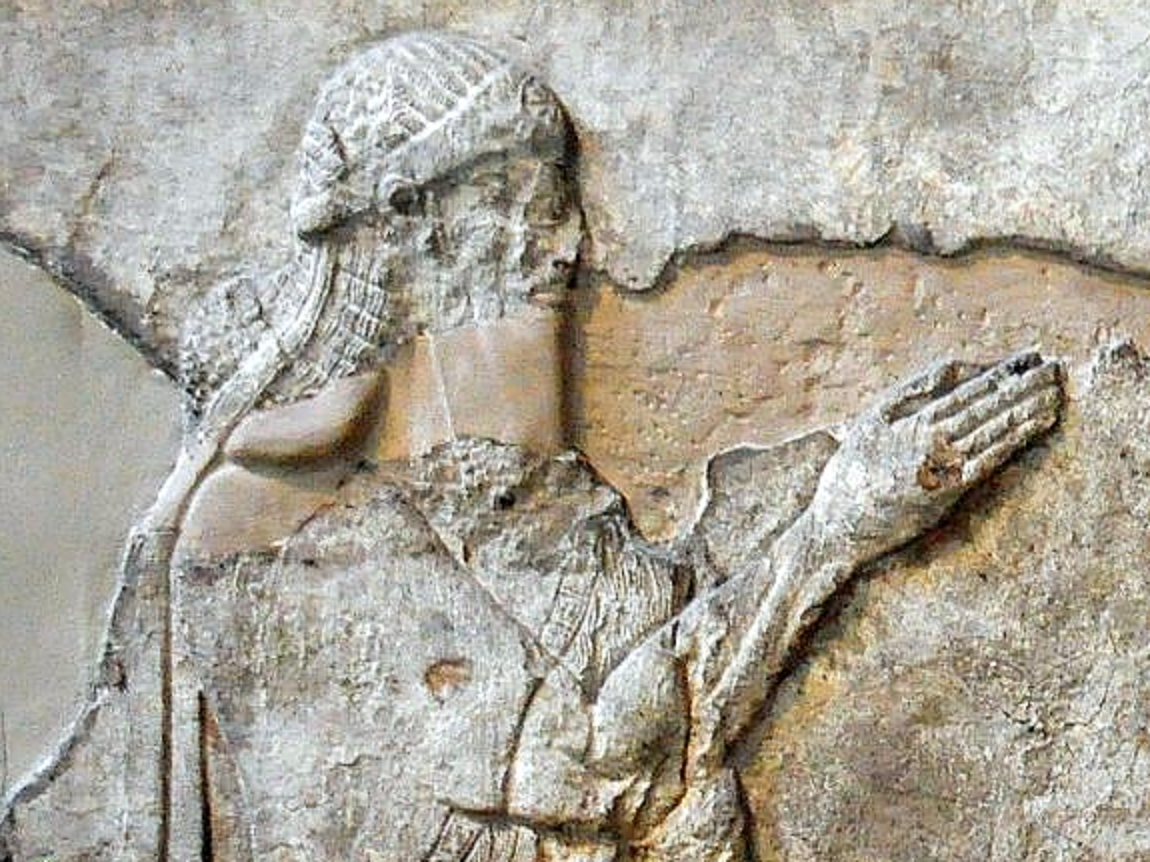 Osama Shukir Muhammed Amin, CC BY-SA 4.0, Wikimedia Commons
Osama Shukir Muhammed Amin, CC BY-SA 4.0, Wikimedia Commons
29. Is it Too Late to Replace the Word "Draconian"?
The people of the Assyrian Empire were known for their brutality in wartime, but their harshness even bled into peacetime. Their legal system was a grade above the usual viciousness of those olden days, with executions and whippings being combined with forced labor to provide especially gruelling punishments. These punishments were meted out for such trivial things as violating property rights.
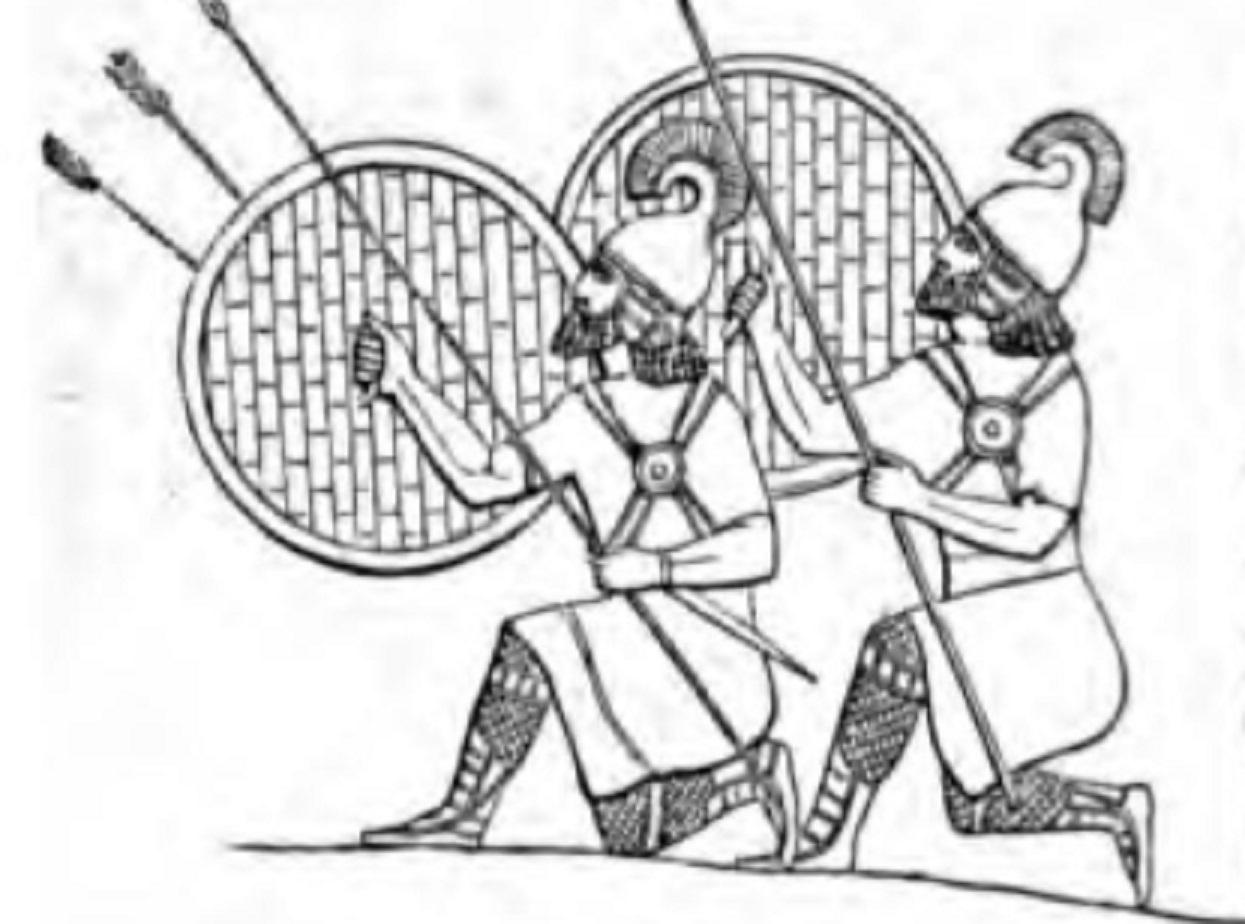 Austen Henry Layard, Wikimedia Commons
Austen Henry Layard, Wikimedia Commons
30. Bunch of Vandals
In modern years, a huge amount of priceless Ancient Assyrian relics have been deliberately destroyed by the Islamic State during their raids on museums and historical ruins in the Middle East.
31. Just a Hobby of Mine
During the final years of the Middle Assyrian Empire, King Ashur-bel-kala needed a distraction from all the conflicts with the nearby Arameans. He ended up having a lavish garden built, and he filled his home with a very early example of a private zoo. He gathered rare animals into his garden with the purpose of breeding a larger number of them. He would display them to visitors, even as he eagerly demanded more collector’s items from travelling merchants.
 Carole Raddato, CC BY-SA 2.0, Wikimedia Commons
Carole Raddato, CC BY-SA 2.0, Wikimedia Commons
32. Two Green Thumbs? More like Two Thousand!
One of the Seven Wonders of the Ancient World could possibly be attributed to the Assyrians. The Hanging Gardens have always been thought to have been at Babylon, but their location has never been firmly established, unlike all the other Seven Wonders. One of the main theories is that the Hanging Gardens weren’t in Babylon, but were actually in the Assyrian capital of Nineveh, built during the reign of King Sennacherib (who ironically put Babylon to the torch and was killed for it).
33. SHHHHH!!!
Hand in hand with their desire for conquest and war, the Assyrians were also a nation of culture and learning. They’ve been credited for building the first library in history. The library at Nineveh, established by the warrior king Ashurbanipal, was particularly impressive; in 1849, the library was re-discovered by archaeologists, along with more than 22,000 clay tablets which were stored in the library of old. NEEEEEERDS!
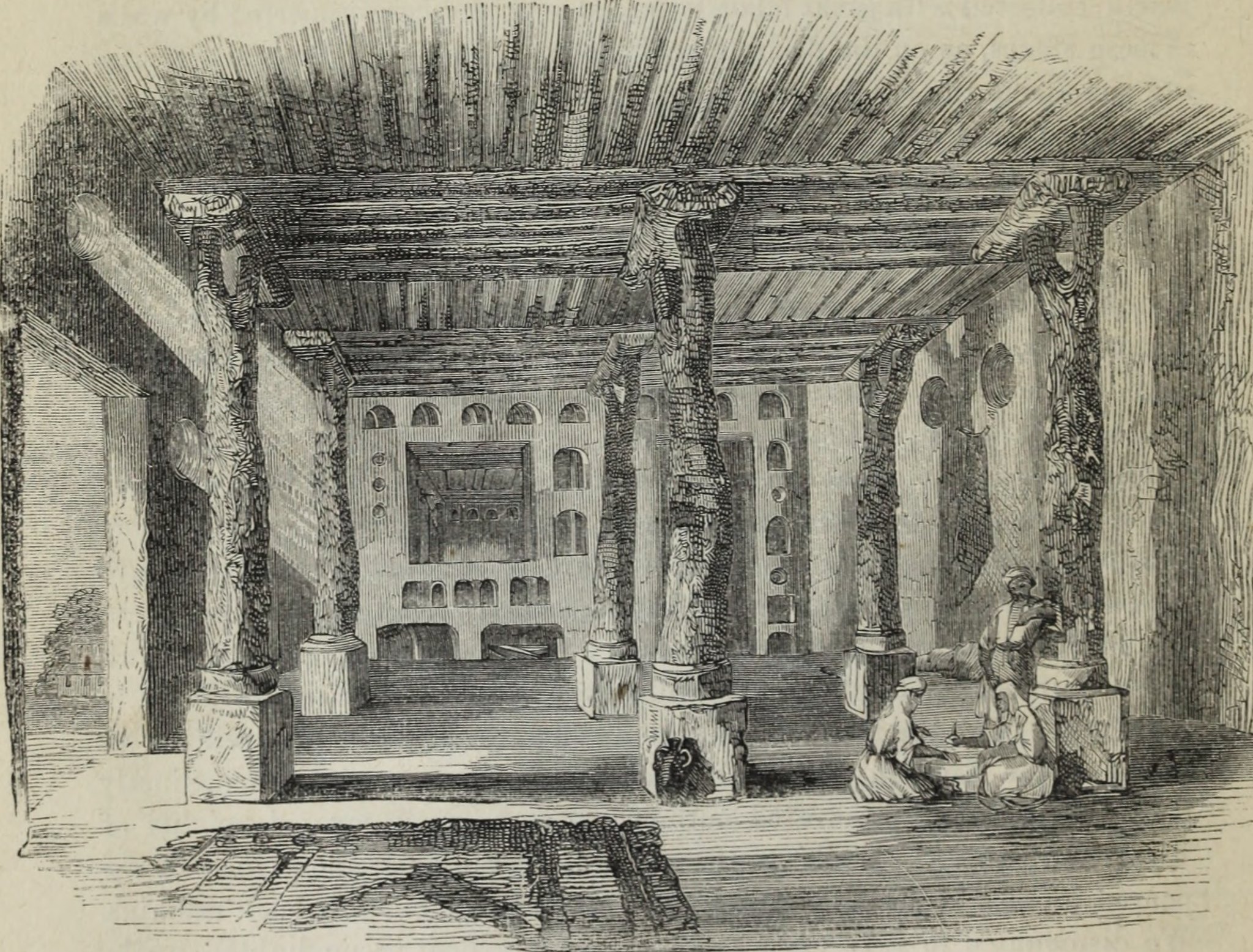 Internet Archive Book Images ,Flickr
Internet Archive Book Images ,Flickr
34. The Price of Getting Ahead
In the ancient Assyrian culture, as with several other cultures of the time, eunuchs were used to guard noblewomen, since they were viewed as being unable to do anything to threaten the women’s honor. However, it wasn’t all bad news for the eunuchs in Assyria. Eunuchs would regularly fight alongside other warriors in battle despite not being the traditional masculine figures of the ancient time. Royal eunuchs guarded and protected the kings and helped with administrative duties, and would often rise to positions of governorship, sometimes even gaining more rights than non-eunuchs.
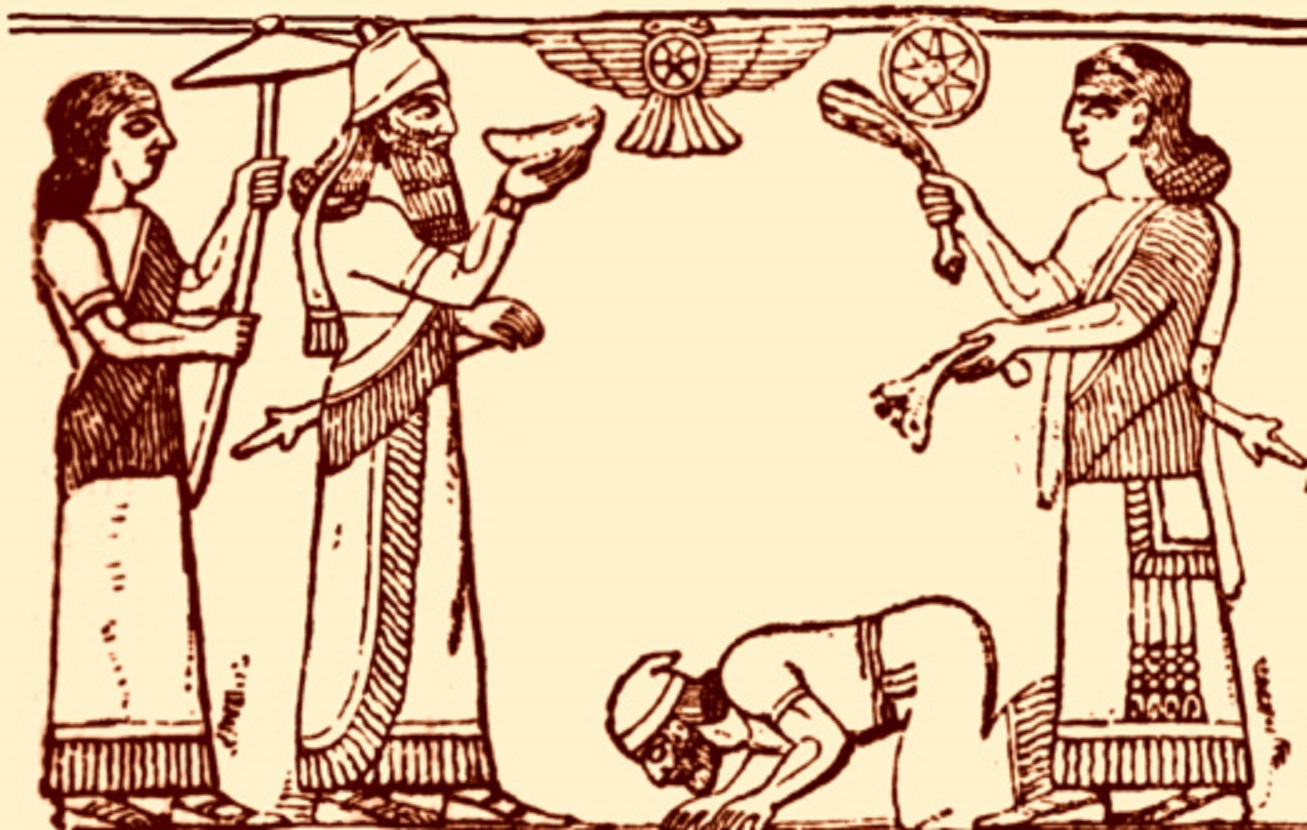 Chaldean, CC BY-SA 3.0, Wikimedia Commons
Chaldean, CC BY-SA 3.0, Wikimedia Commons
35. Humane Deportation?
The Assyrian Empire had several strategies to prevent the people they conquered from rising against them down the line. Whenever they took over another region, they took the local population away from the land and replaced them with loyal Assyrians. However, while the Assyrians were famously cruel to anyone who actively fought them, they generally didn’t hold any grudges against the civilian populations. The people they moved were allegedly treated well and moved to a region which would benefit them most, as the Assyrians didn’t want them to resent their new masters.
36. A Name is a Name, Right?
The modern name Syria was taken from the old region of Assyria during the time when the Seleucid dynasty took charge of Alexander the Great’s Asian territories and tried Hellenizing (aka Greek-ifying) their populations. Assyria resisted Hellenization, and in a case of mistranslations, the Seleucids took the name "Assyria," tweaked it, and used it to describe the region next to Assyria instead. This led to Europeans later using the word "Syrians" to describe people who weren't even Assyrians. Sounds like something Europeans would do.
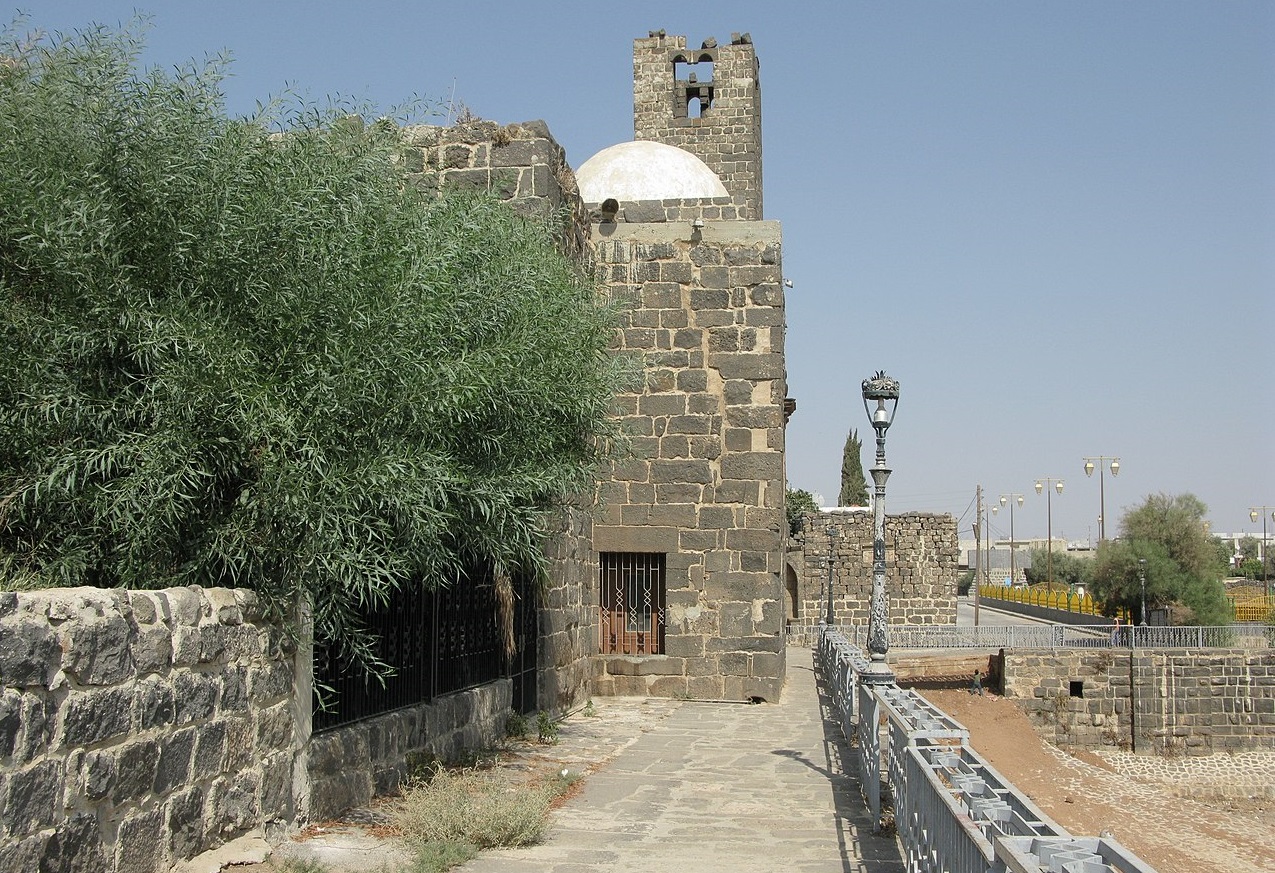 Vyacheslav Argenberg , CC BY 4.0, Wikimedia Commons
Vyacheslav Argenberg , CC BY 4.0, Wikimedia Commons
37. Weapons of Superior Destruction
There are a number of reasons that account for the success and longevity of the Assyrian Empire. One of them was their innovative use of iron weapons in battle. Not only was this effective over the inferior metals used in other civilizations’ armaments, but iron weapons were mass-produced for the huge Assyrian armies which characterized the Assyrian Empire’s heyday. Not only that, they developed siege weapons beyond any civilization that had appeared before them, and were the first ancient army to have an established corps of engineers.
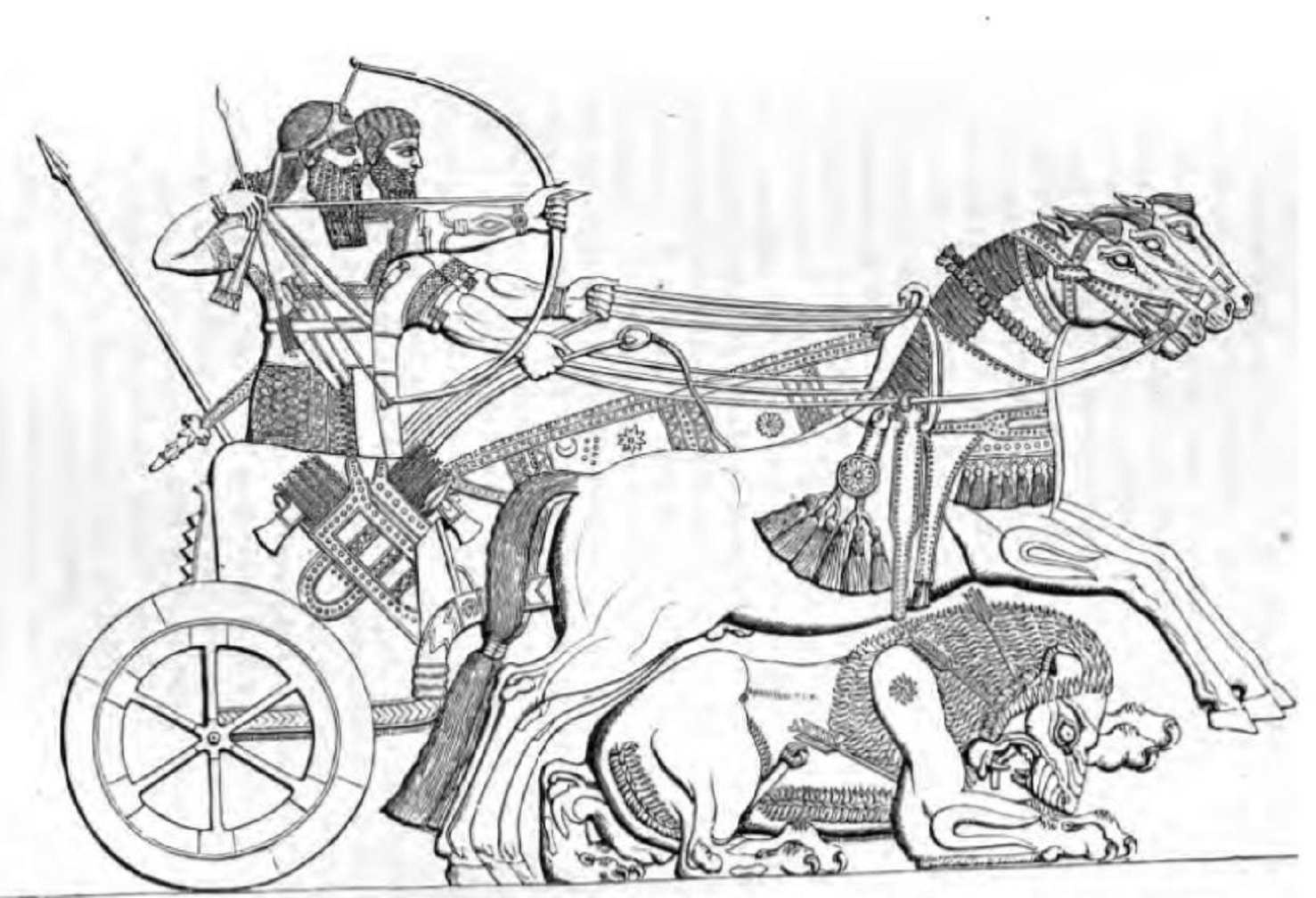 Austen Henry Layard, Wikimedia Commons
Austen Henry Layard, Wikimedia Commons
38. You Just Made a Big Mistake!
Tukulti-Ninurta I ruled Assyria from 1244-1208 BC, and he spent those years proving himself to be one of Assyria’s most successful warrior kings. He continued his father’s war against the Hittite Empire of Turkey, and captured the city of Babylon after defeating its king, Kashtiliash, in battle. Tukulti-Ninurta also happened to be a sore winner; not only did he tread his “feet upon [the king’s] lordly neck as if it were a footstool,” he also wrote an epic poem about his successes. When the Babylonians revolted against his rule, Tukulti-Ninurta sacked the city, including its temples. This was seen as blasphemy of the highest order, and his sons proceeded to revolt and murder their own father just to be on the winning side of that argument.
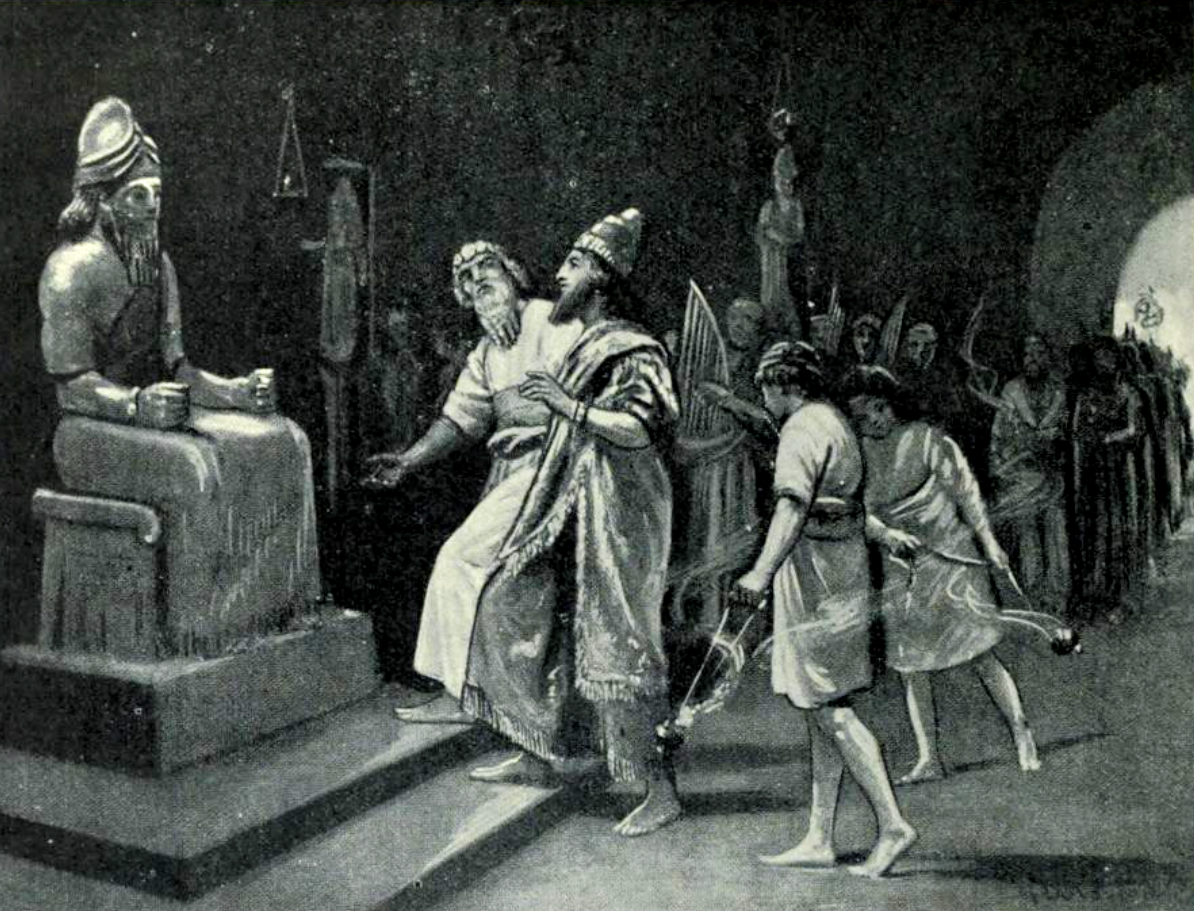 A. C. Weatherstone, Wikimedia Commons
A. C. Weatherstone, Wikimedia Commons
39. Keep Your Enemies Horrified
Taking a leaf from the Tywin Lannister book of ruling, the Assyrian kings were known for their vicious cruelty towards enemies of the Assyrian Empire. King Ashurbanipal, for example, was infamously pictured as putting a dog chain through a conquered Arab king’s jaw and forcing him to live in a dog kennel!
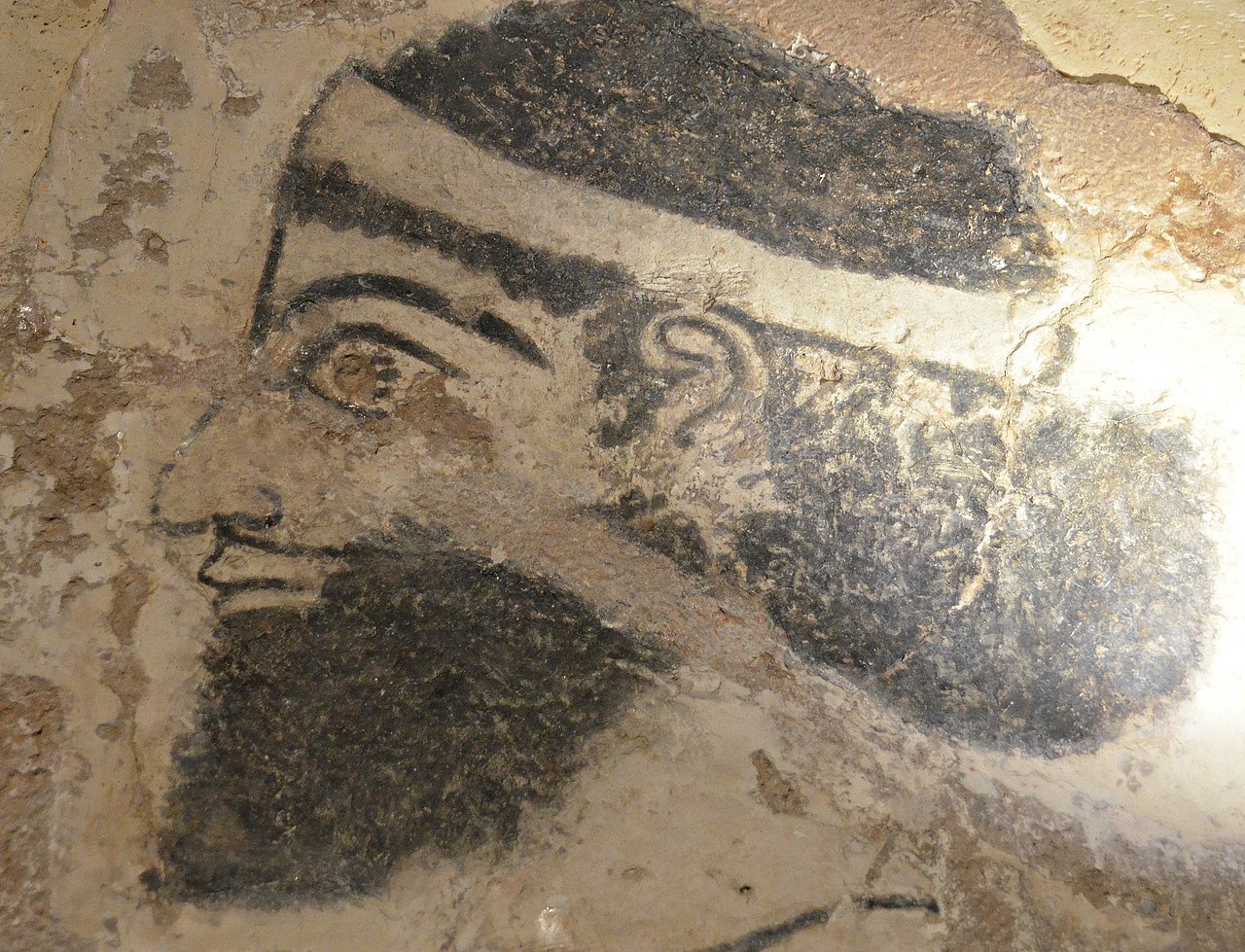 Carole Raddato, CC BY-SA 2.0, Wikimedia Commons
Carole Raddato, CC BY-SA 2.0, Wikimedia Commons
40. Overshadowed by Other Atrocities…
The First World War led to many terrible battles costing millions of lives. It also led to more than one genocide. Aside from the Armenians, the Ottoman Empire (now known as the Turks) and their Kurdish allies committed a horrific genocide against the Assyrian population. Up to 300,000 Assyrians lost their lives, which accounted for about two thirds of all Assyrian people at that time.
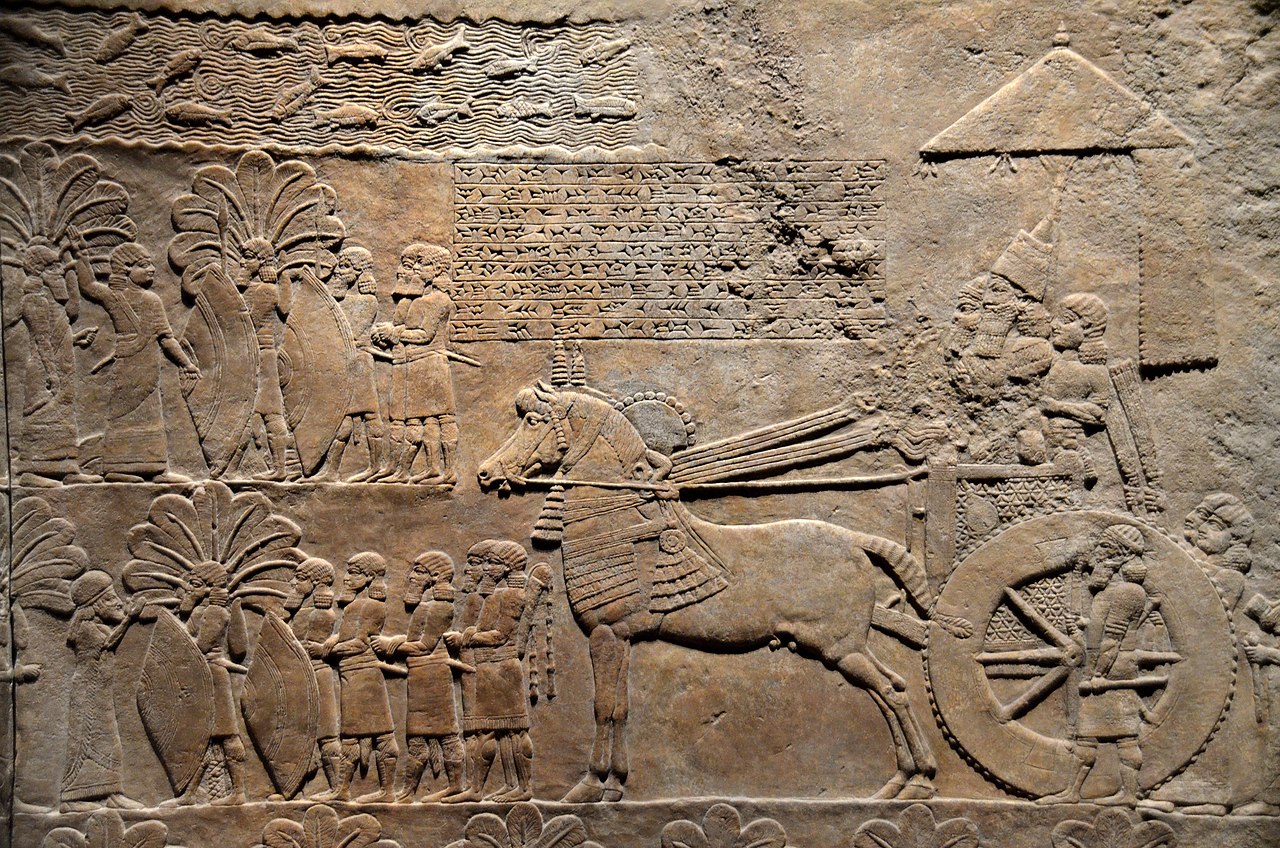 Carole Raddato, CC BY-SA 2.0, Wikimedia Commons
Carole Raddato, CC BY-SA 2.0, Wikimedia Commons
41. Record Size
By 671 BC, the Assyrian Empire was the most powerful empire in the known world. It held the central Middle East, extending from Anatolia to the beginning of the Arabian Peninsula, reaching to the Persian Gulf, and extending all the way down to include the Egyptian Kingdom. It was the largest empire that had ever existed up to that point.
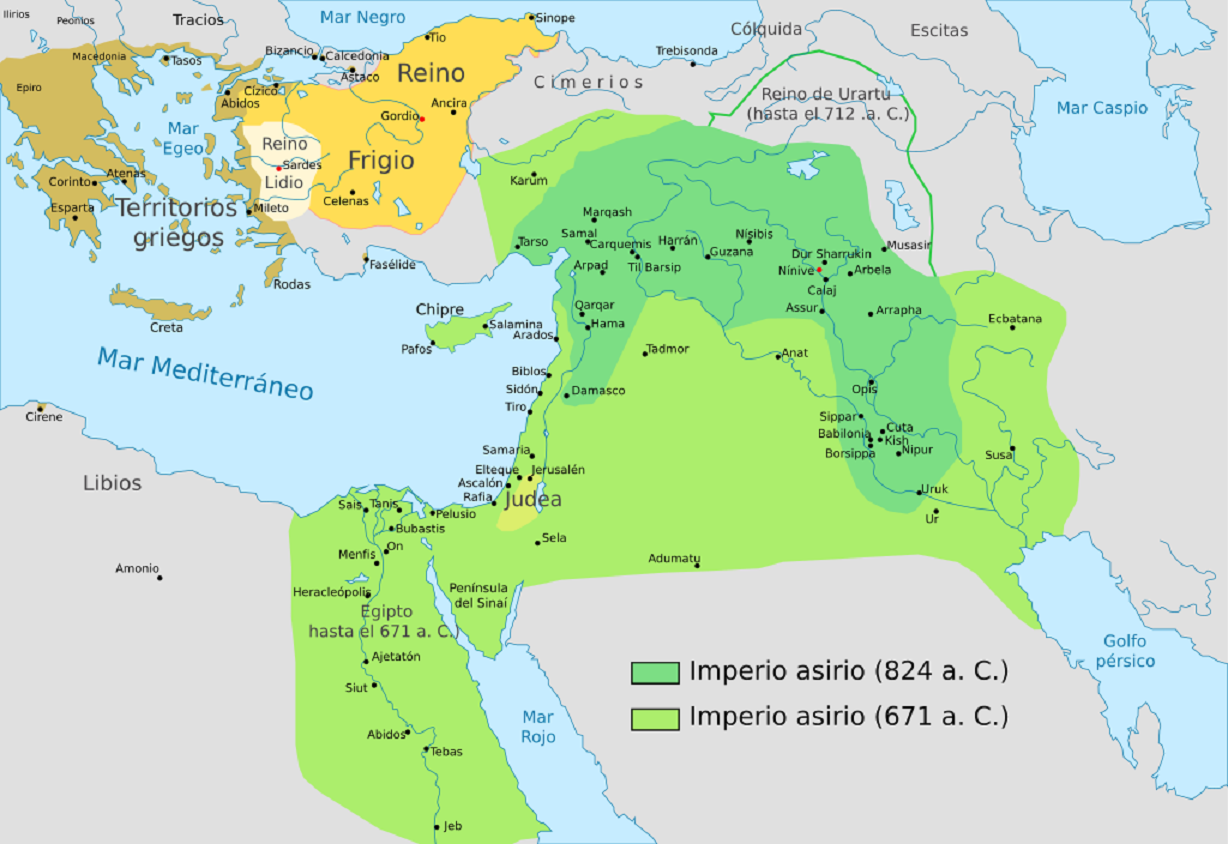 Map of Assyria, CC BY-SA 4.0, Wikimedia Commons
Map of Assyria, CC BY-SA 4.0, Wikimedia Commons
42. The High Watermark
While Ashurbanipal can be considered a highly successful Assyrian king who expanded the empire to its biggest size, his success proved impossible to maintain. The empire was over-stretched, and they were forced to overtax their citizens to pay for the large armies needed to keep order. They had also spent years making enemies, and who all decided it was worth teaming up to destroy the Assyrians. In 612 BC, the great city of Nineveh was attacked and burned by a grand alliance of Persians, Babylonians, Scythians, and Medes.
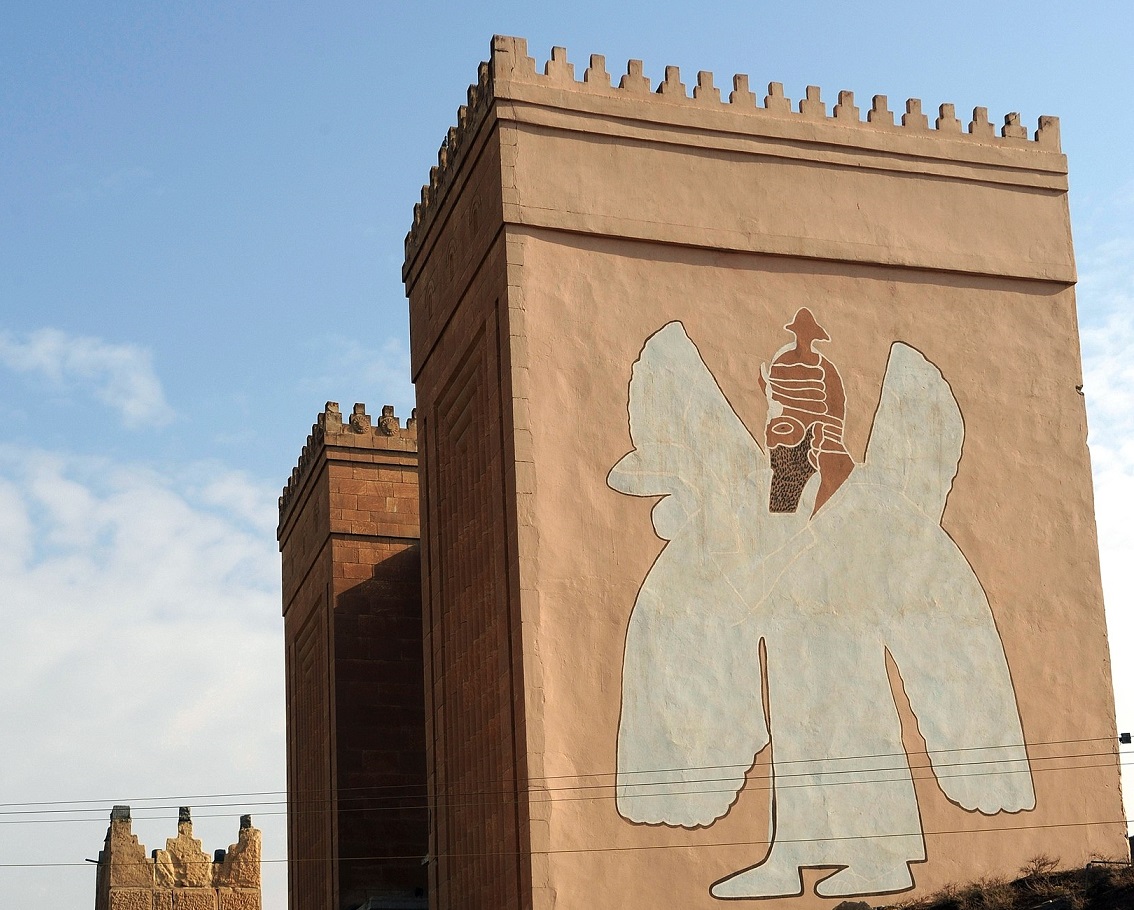 JoAnn S. Makinano, Wikimedia Commons
JoAnn S. Makinano, Wikimedia Commons
43. Life’s Little Ironies
While the destruction of Nineveh was a shocking blow to the Neo-Assyrian Empire, there was a surprising silver lining. The attackers burned the great palace, which collapsed onto the massive library of Nineveh. This caused the library to be baked hard, leaving the clay tablet books inside buried, but also preserved. So while the city’s remains were hidden for 2,000 years, its eventual discovery, along with its massive library, meant that the Assyrian Empire would never be erased from history, and it was partly thanks to the very people who were trying to do the erasing!
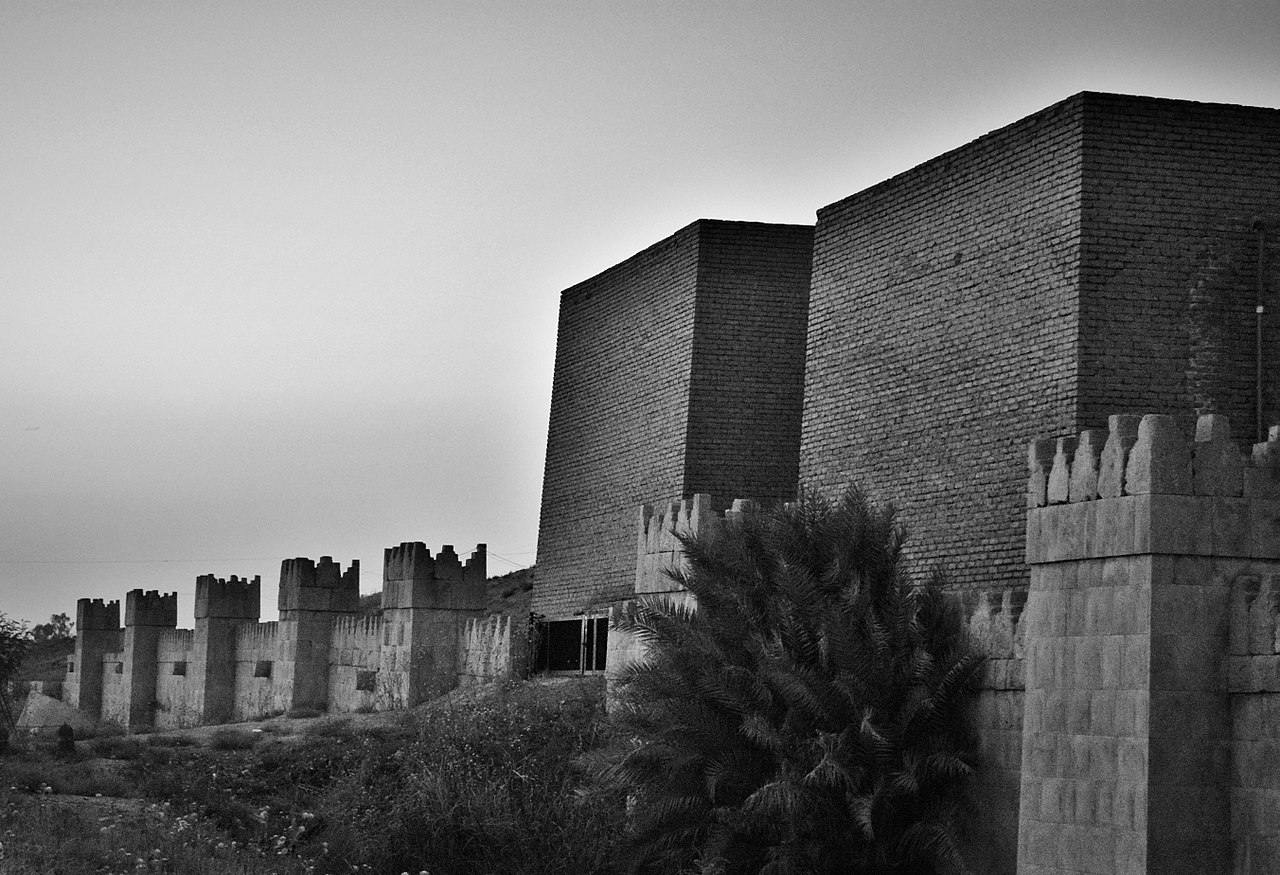 Omar Siddeeq Yousif, CC BY-SA 4.0, Wikimedia Commons
Omar Siddeeq Yousif, CC BY-SA 4.0, Wikimedia Commons
Sources: 1, 2, 3, 4, 5, 6, 7, 8, 9, 10, 11, 12, 13, 14, 15, 16, 17, 18, 19



